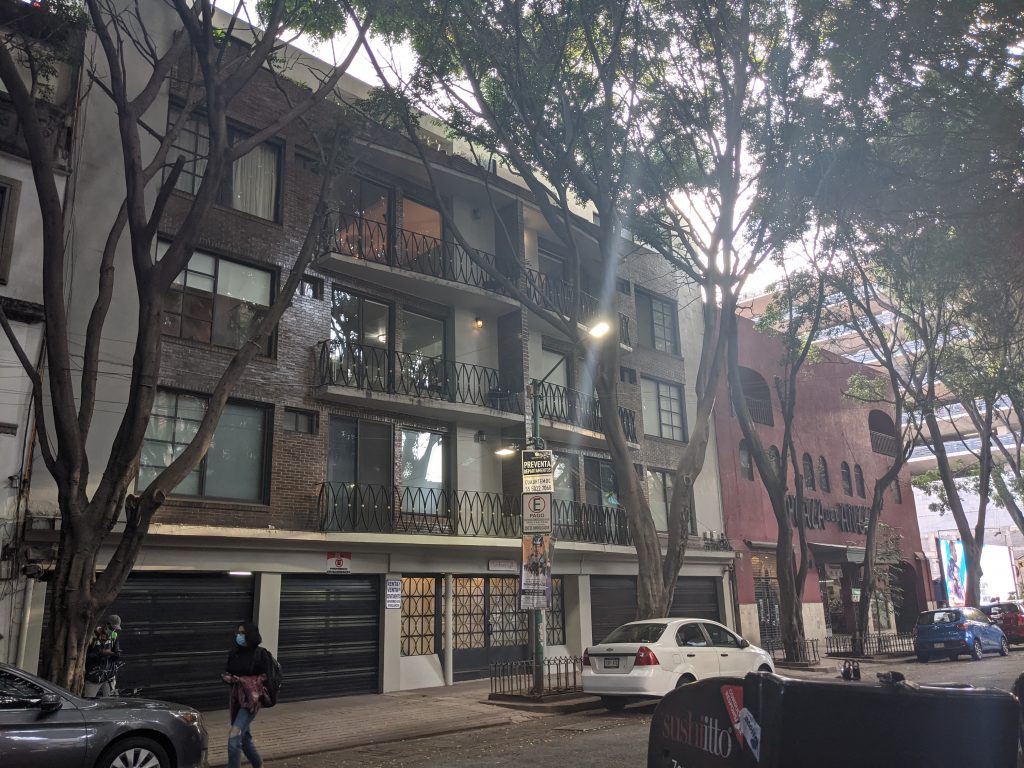Mexico City has a stereotype of being a sprawling, crazy mess of poverty, crime, earthquakes, pollution and (recently) major subway crashes. It has all of that, but it also has some amazingly beautiful neighborhoods. A British friend of mine took a short, first time trip to Mexico City while we were both in Puerto Escondido. When she came back she was blown away. She said it was “like being in Paris in the springtime.” I wasn’t sure what she meant by that, but now that I’m here, I can see what she means. These large, high end neighborhoods like Roma Norte (where I’m staying) and Condesa have amazing restaurants, cafes, shops, parks and tons of trees shading the streets. Hopefully the first set of pictures below can give you a sense of that.
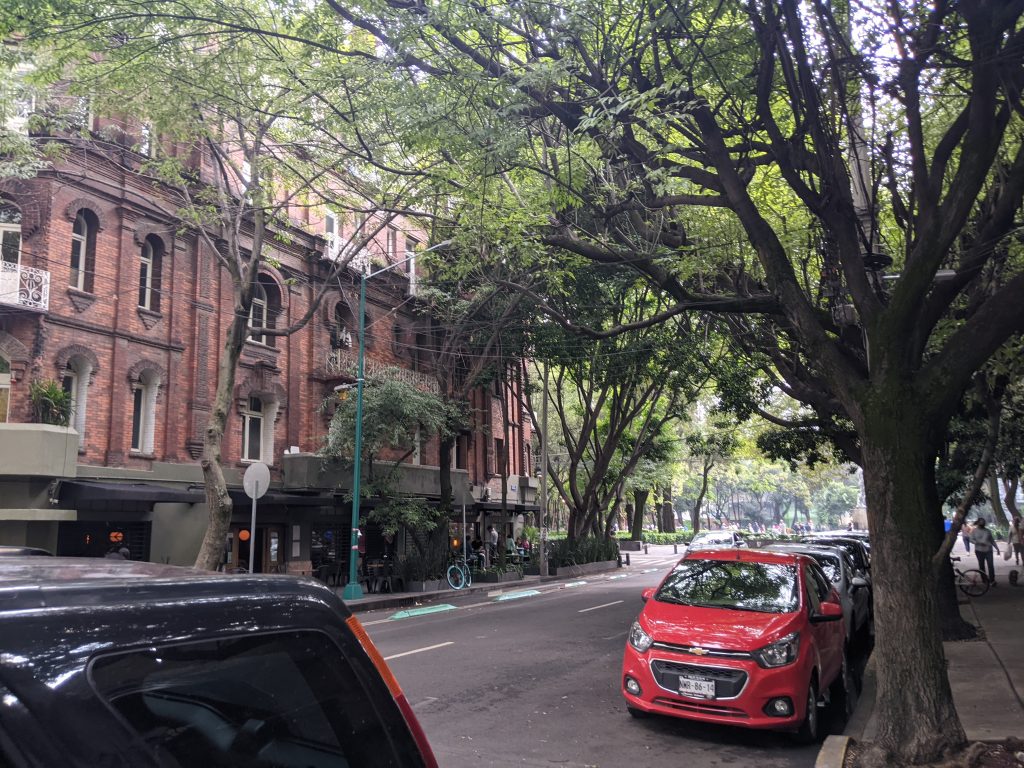
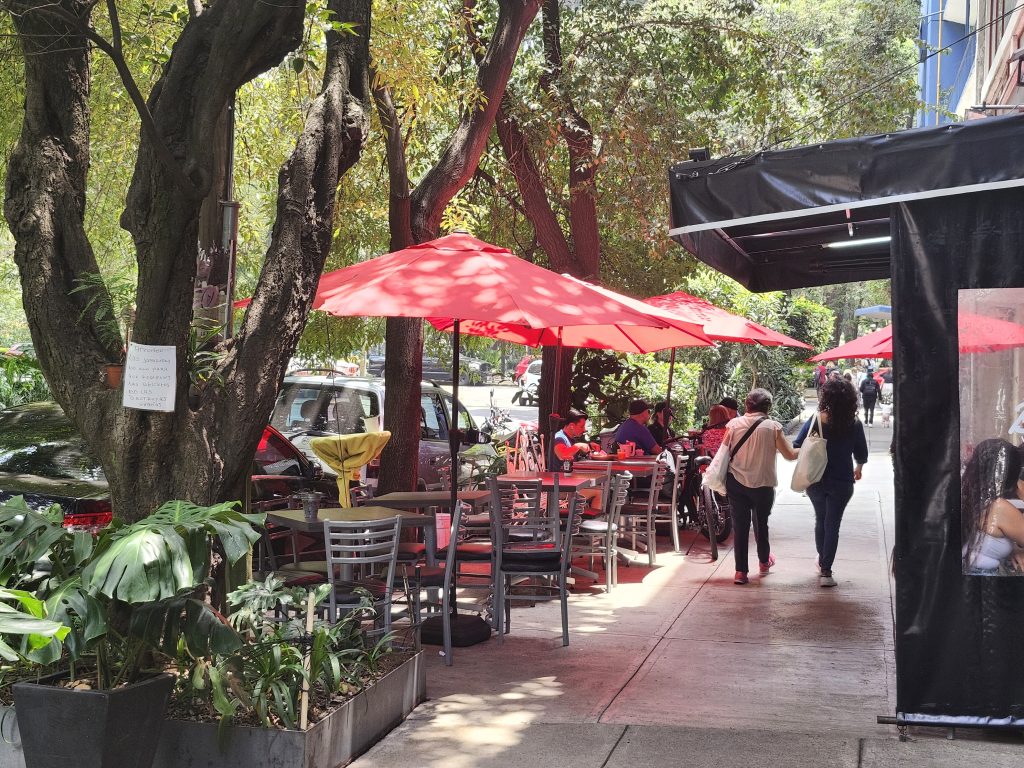
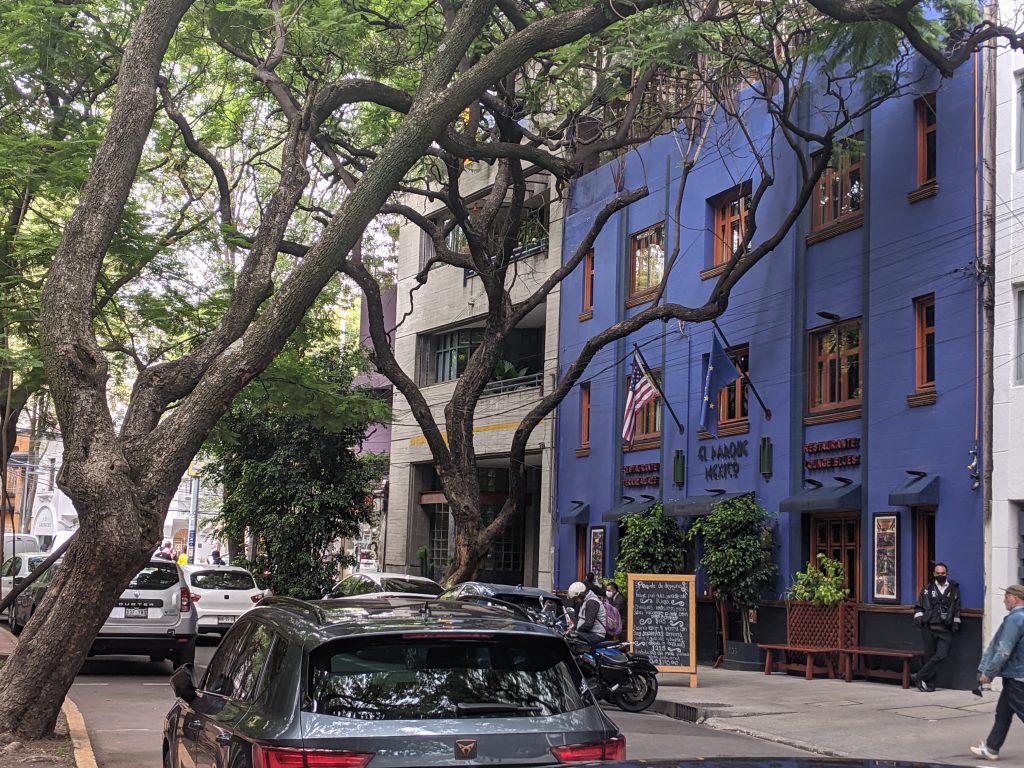
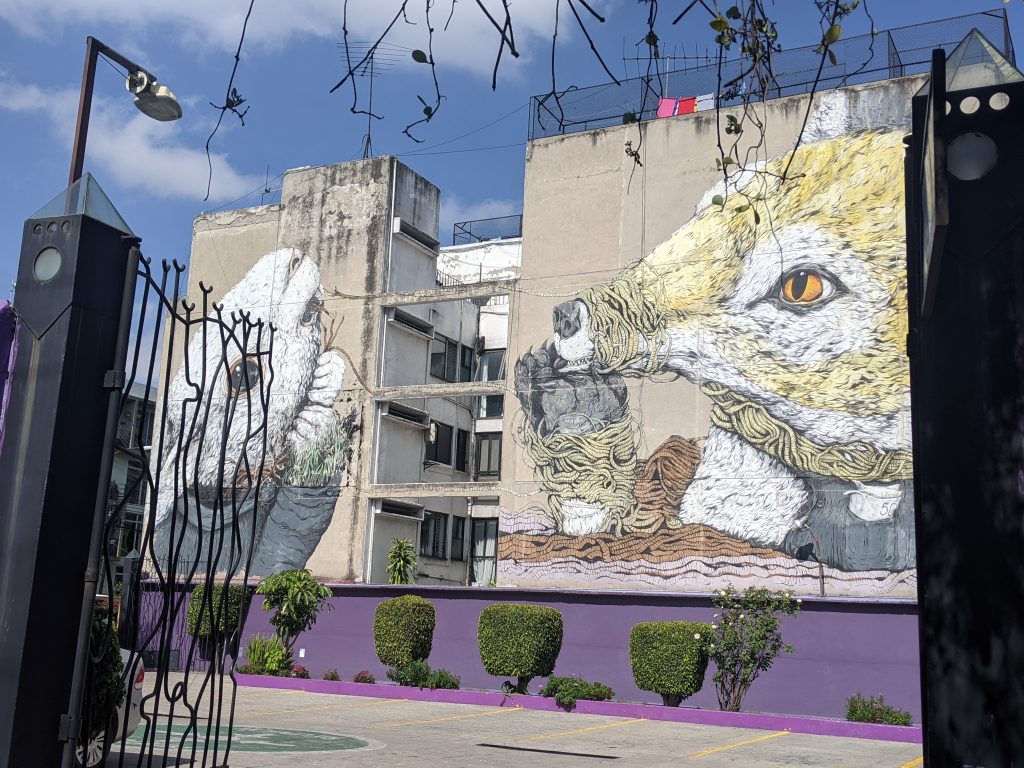
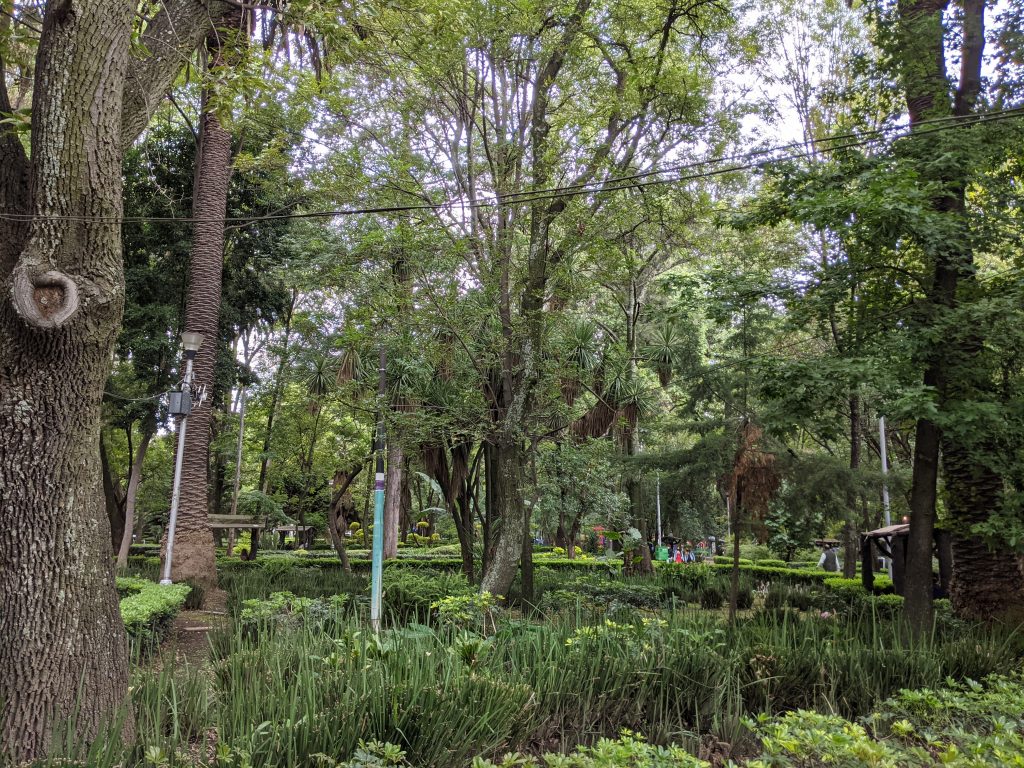
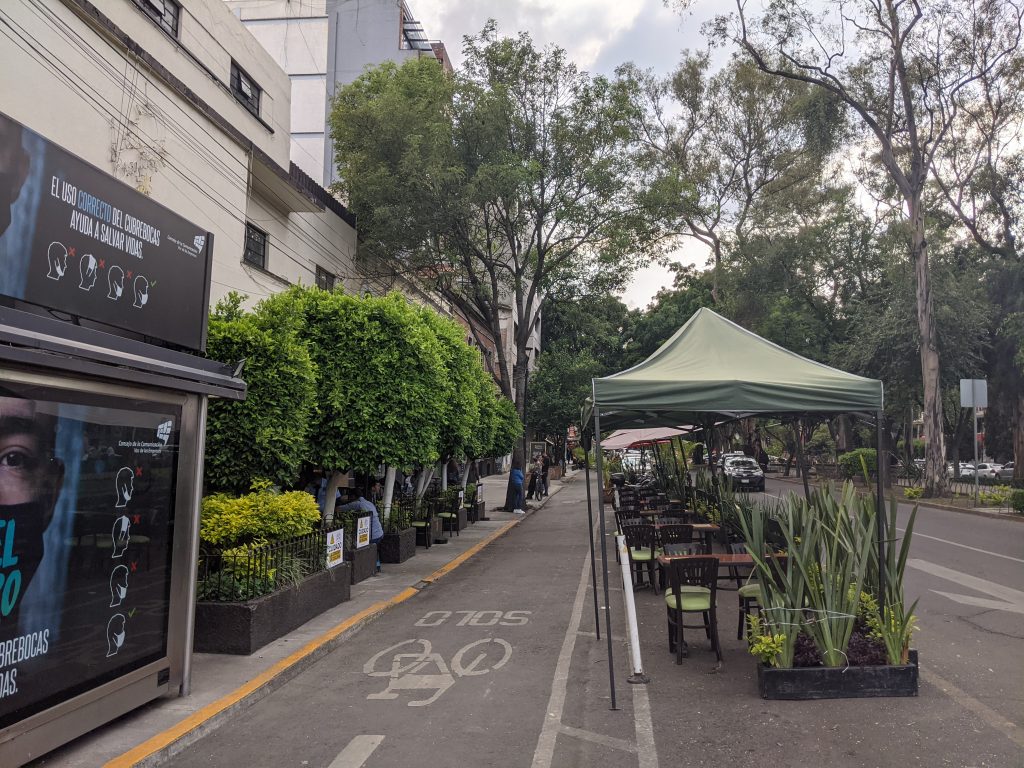
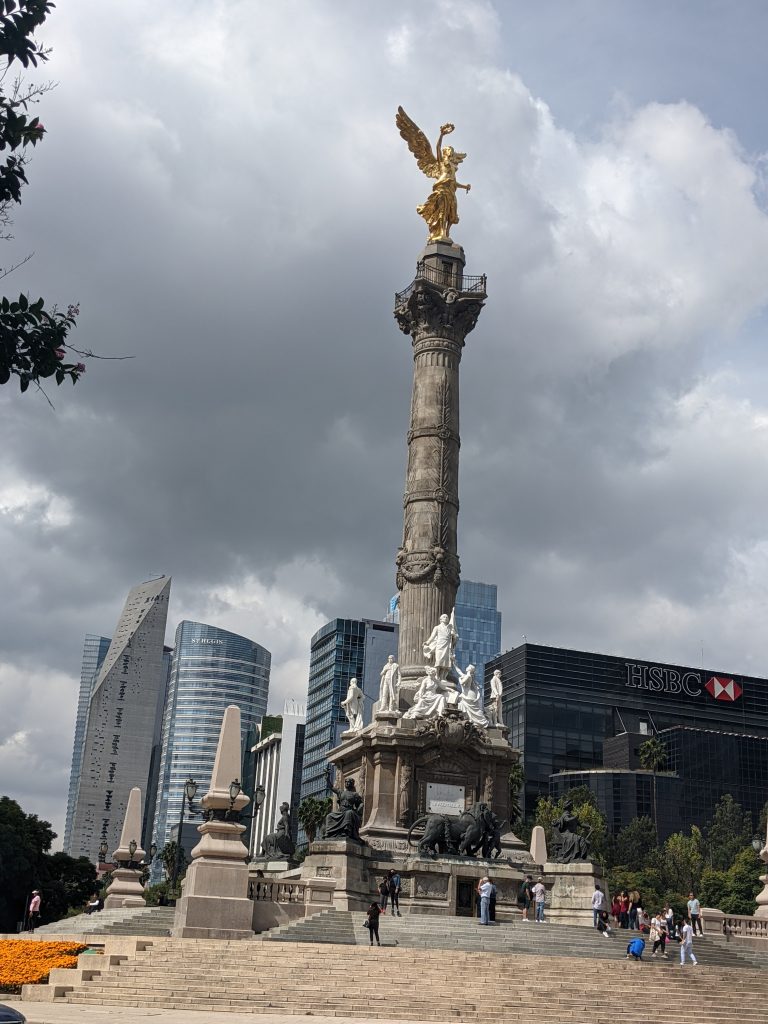
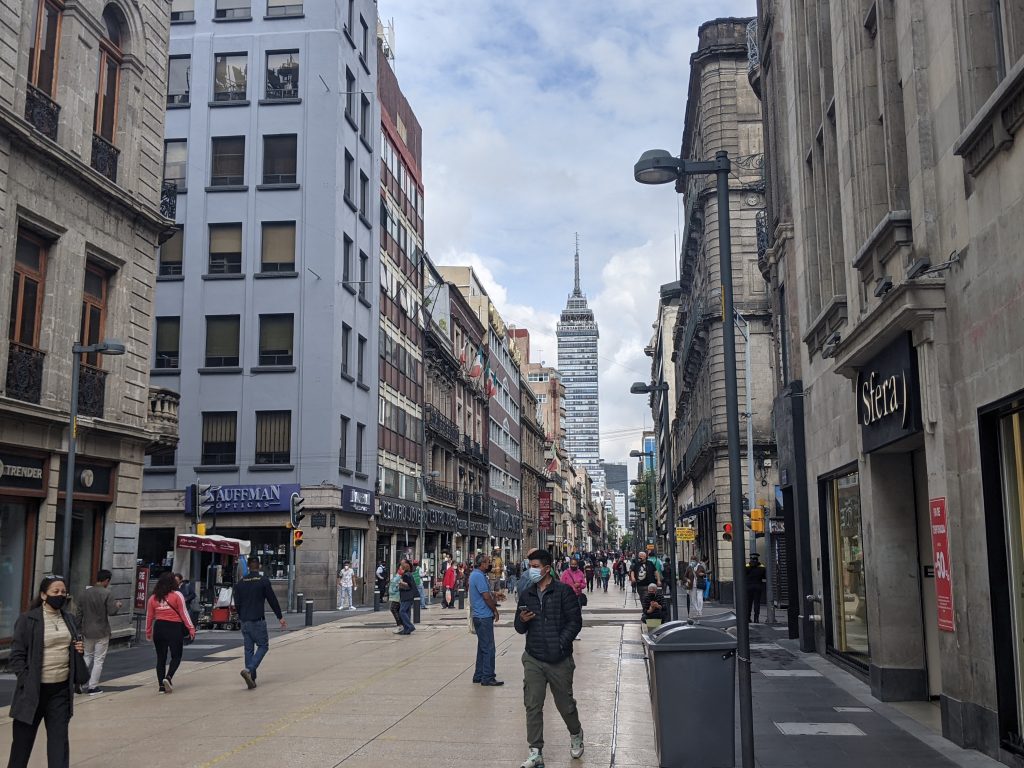
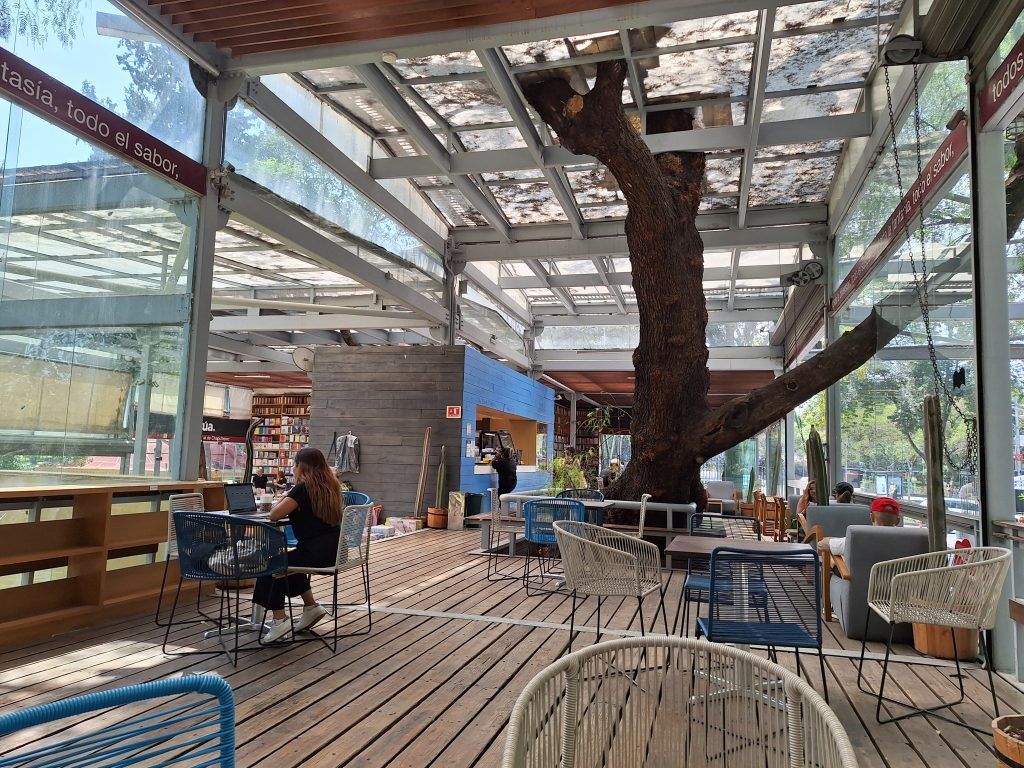
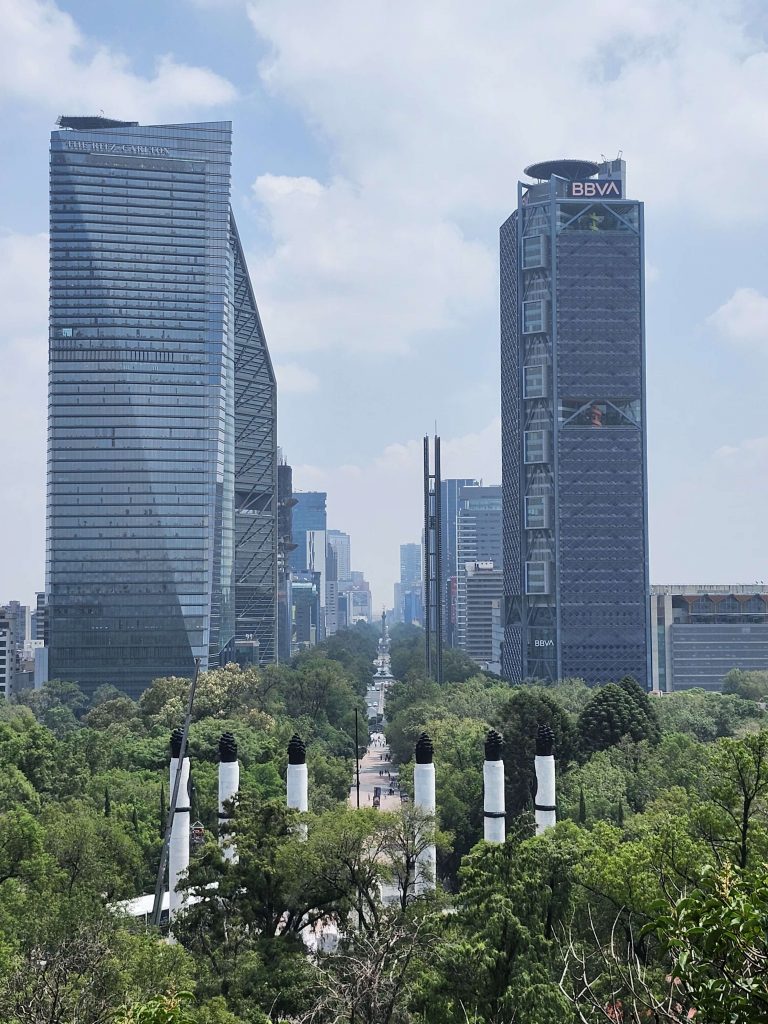
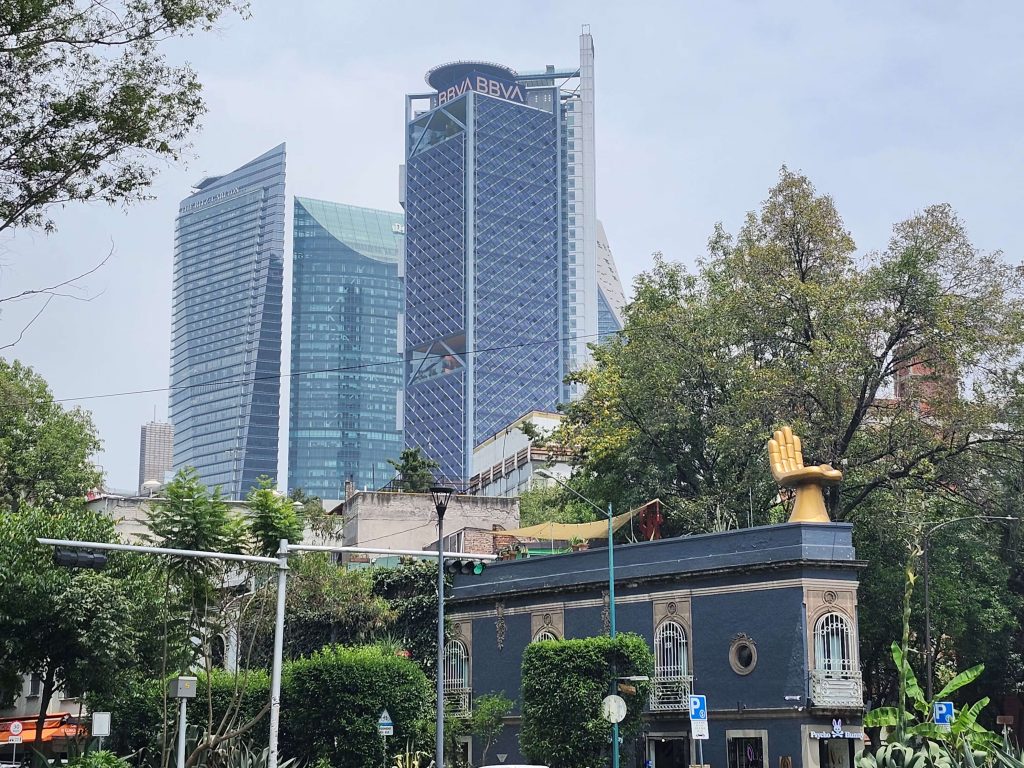
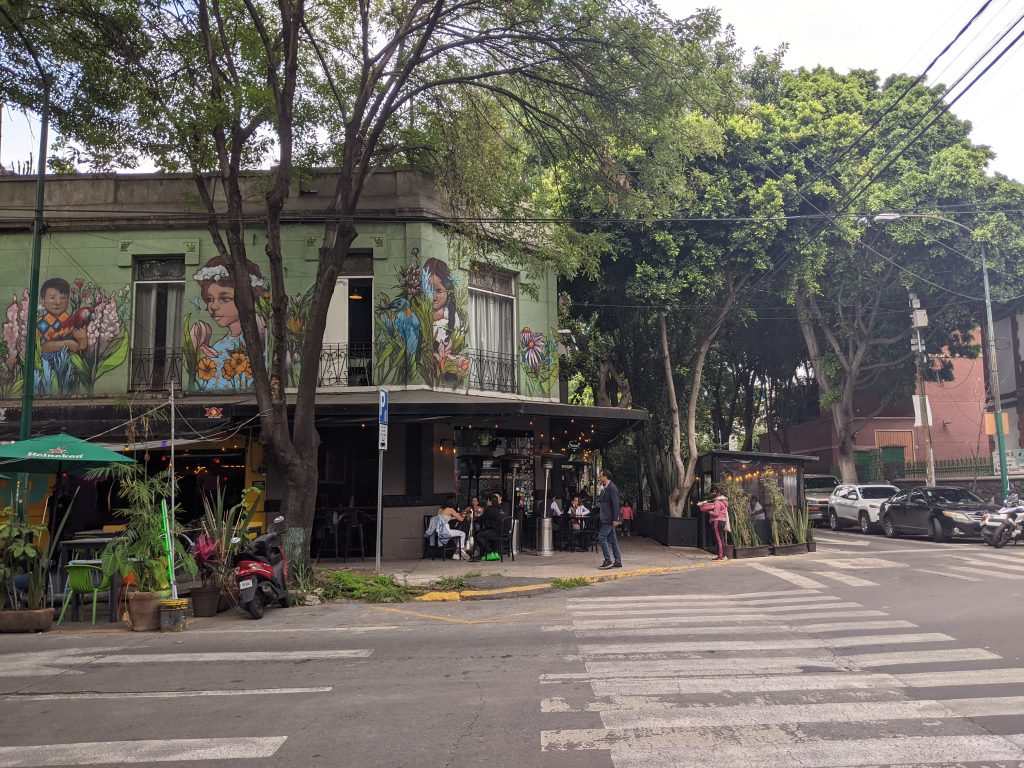
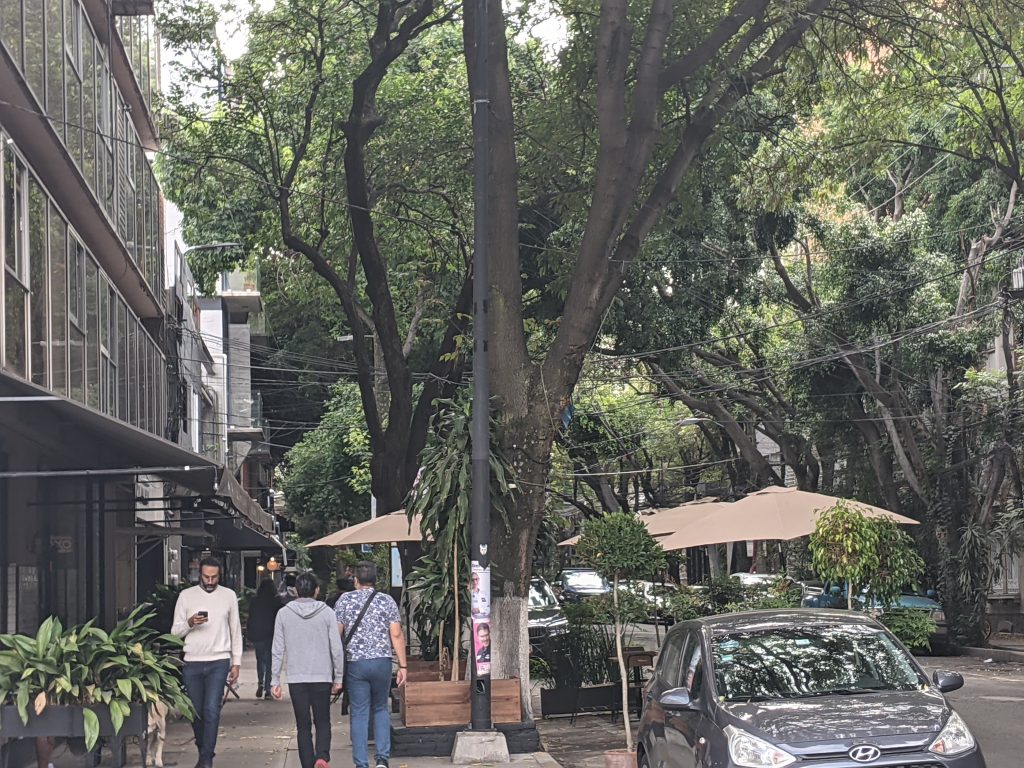
I took the Metro scores of times, with no problems. But I only did it once during rush hour. You can see how crowded it is on the platform going the other direction. People are still streaming in from the entrance on the left. Thankfully, it was not very crowded in the direction I was going.
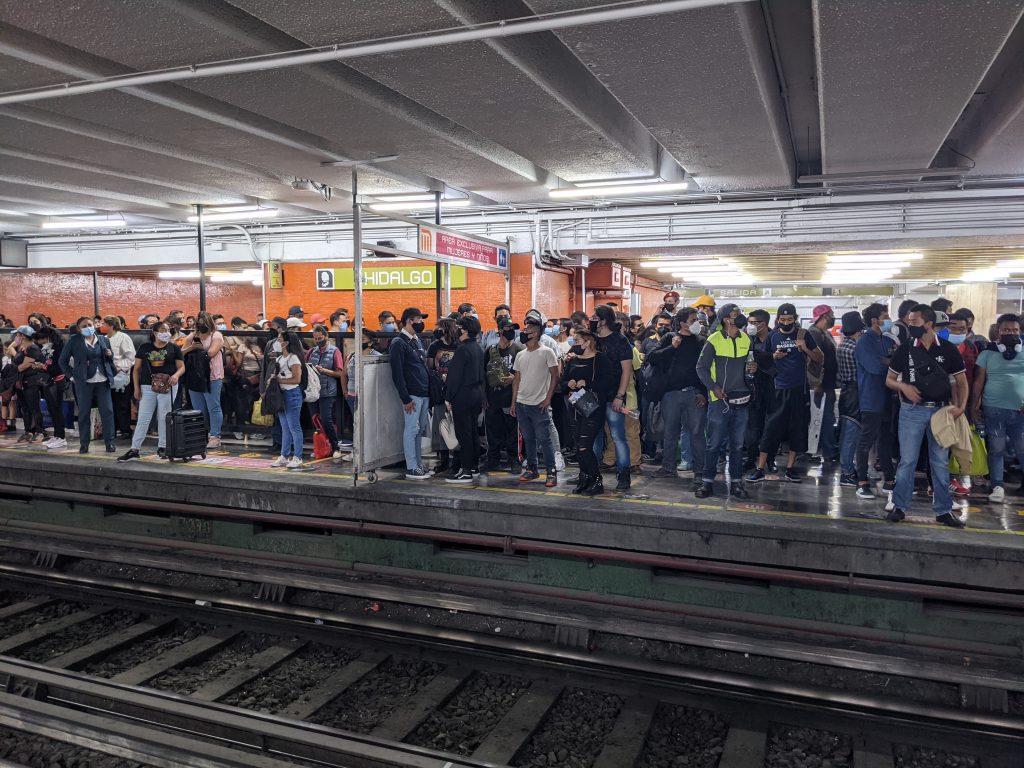
From Street Food to Michelin Star Restaurants
There are amazing food stalls everywhere like this. I had most of my meals were at these types of places and they were as good as any classic Mexican restaurant meals.
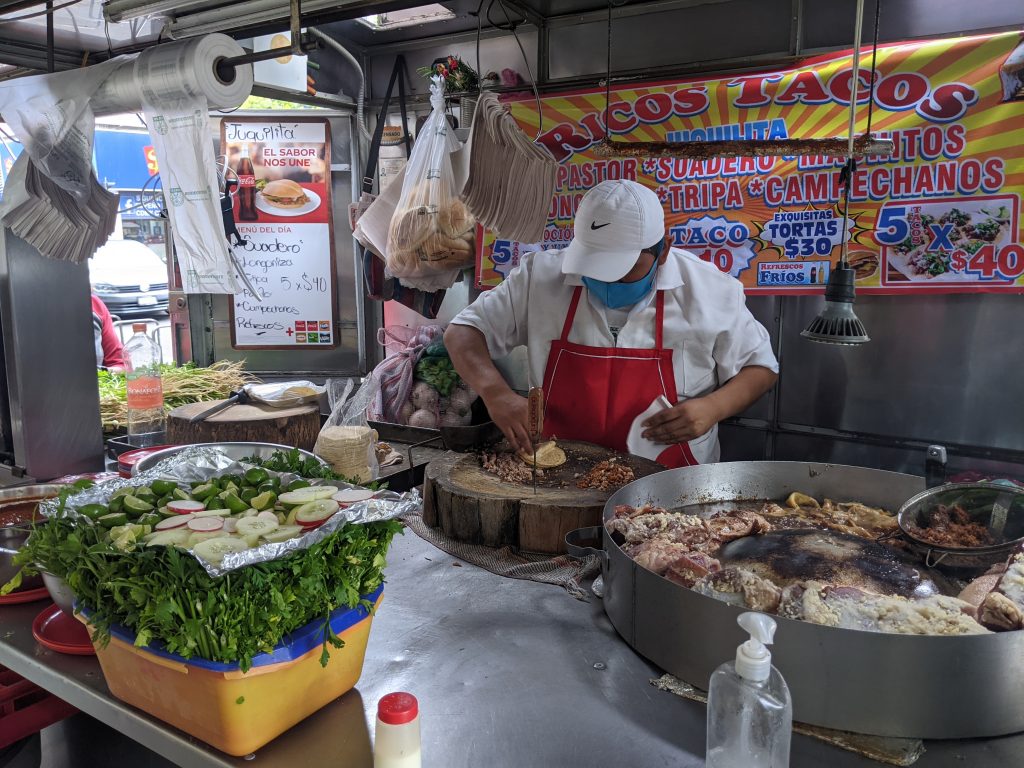
While I did eat a lot of street food, as the picture above testifies, I also made a foray to Pujol, which is considered the best restaurant in Mexico City. It’s listed on the San Pellegrino list of the world’s top 50 restaurants. I was lucky enough to walk in around 1:30pm without a reservation and they had one opening at the bar for the 9 course taco tasting menu. It lasted over 3 hours and ended up with a few of us out on their patio for the dessert. I guess they had to clear out the bar for the next group with early dinner reservations.
The low key entrance in the middle of a residential neighborhood.
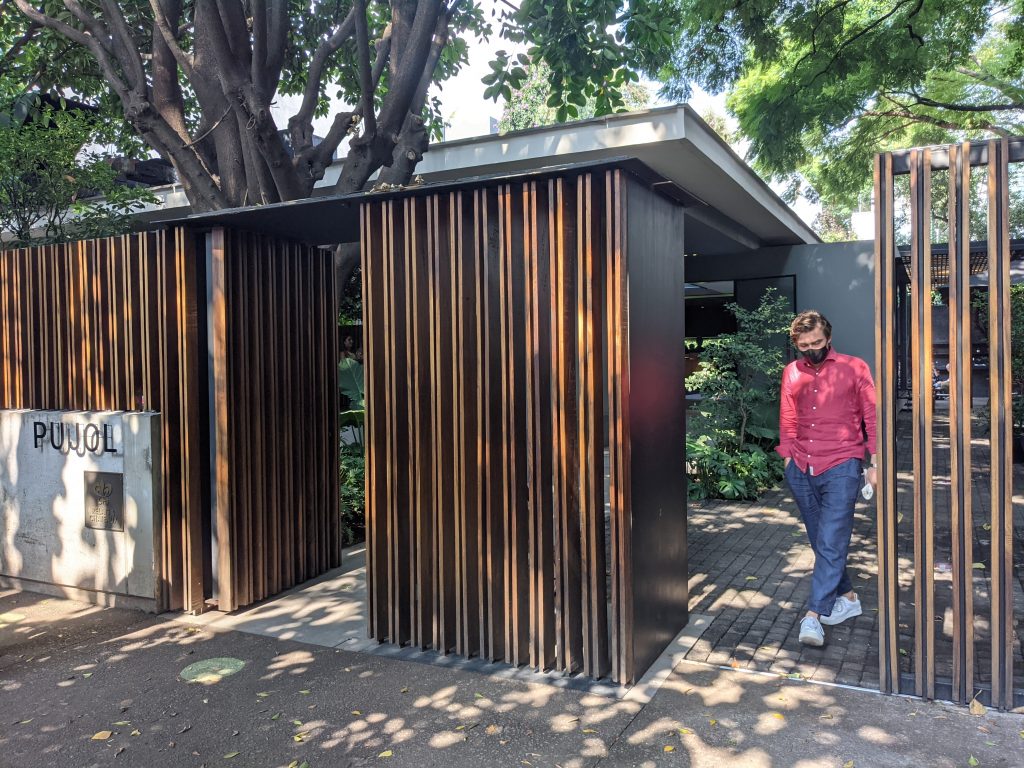
Even the “snack” included a small pastry with a local cream sauce with caviar mixed in. The “hearty toast” was a type of tosdada with about 7 different flavors mixed in including some succulent purple cactus flowers on top. I included the Margarita Manzanilla here becasue I had it, and it was very good.
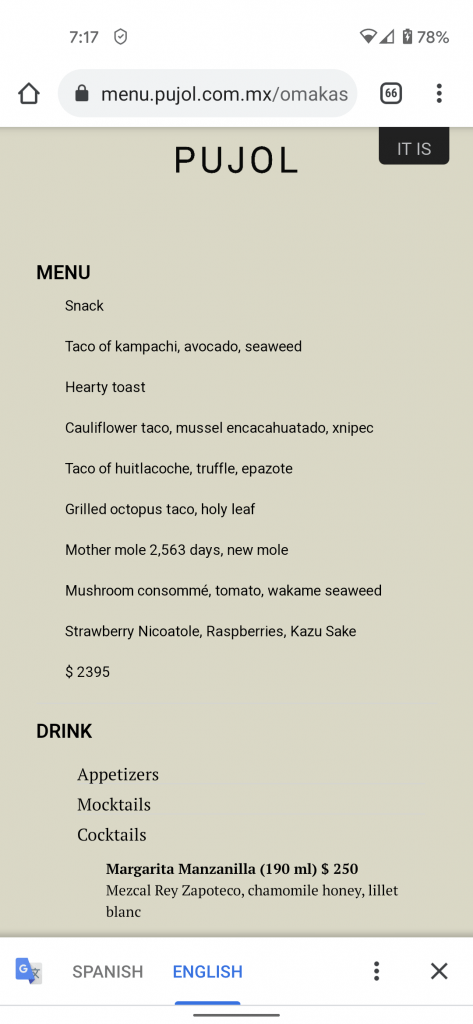
The patio where we had our dessert.
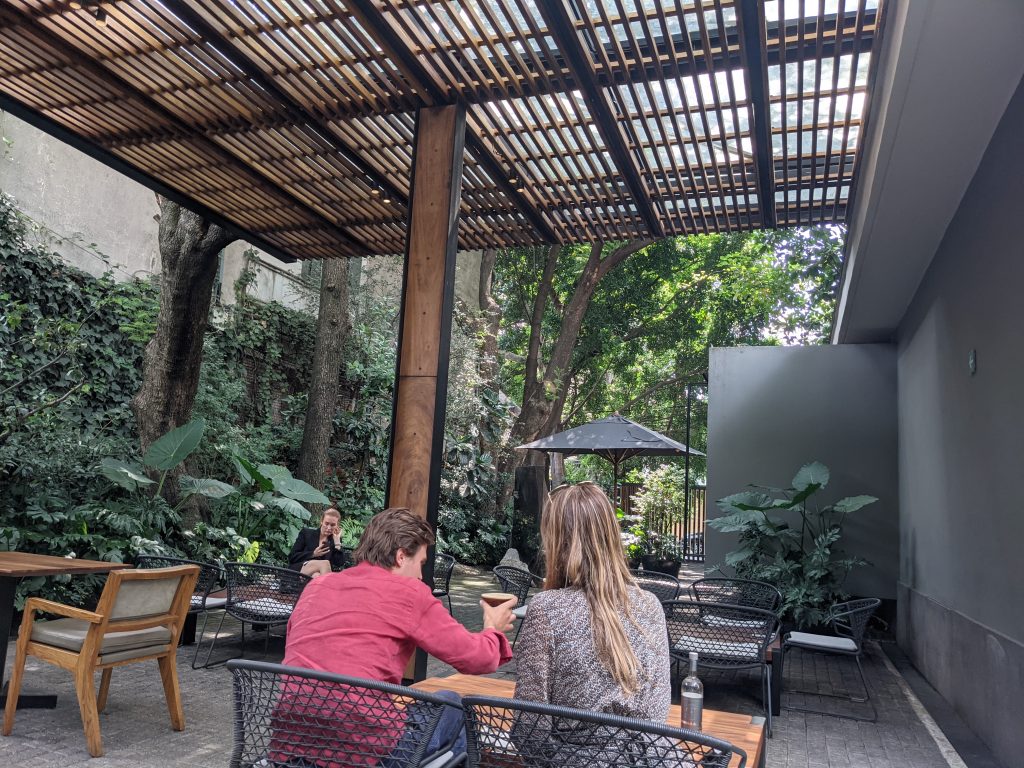
Estadio Azteca
I had a chance to attend a soccer match at Estadio Azteca through Airbnb adventures. It was a match between Club America, one of the premier clubs in Mexico, and Necaxa, a middle of the table club from an area about 600km north of Mexico City. Our host is a huge Club America fan, and they did win 2-1. Estadio Azteca was completed in 1968 and hosted the finals for both the 1970 and 1986 World Cups. It also hosts the annual game the NFL plays in Mexico City. It usually seats around 87,000, but with Covid restrictions its temporary capacity is only around 18,000.
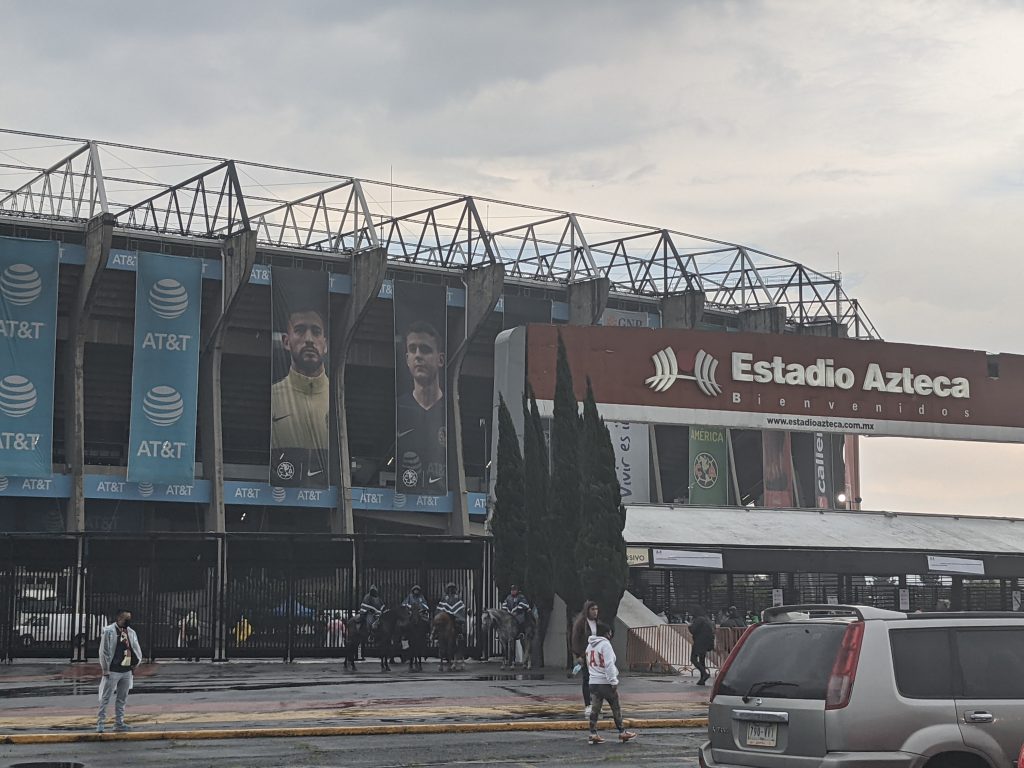
We had great seats.
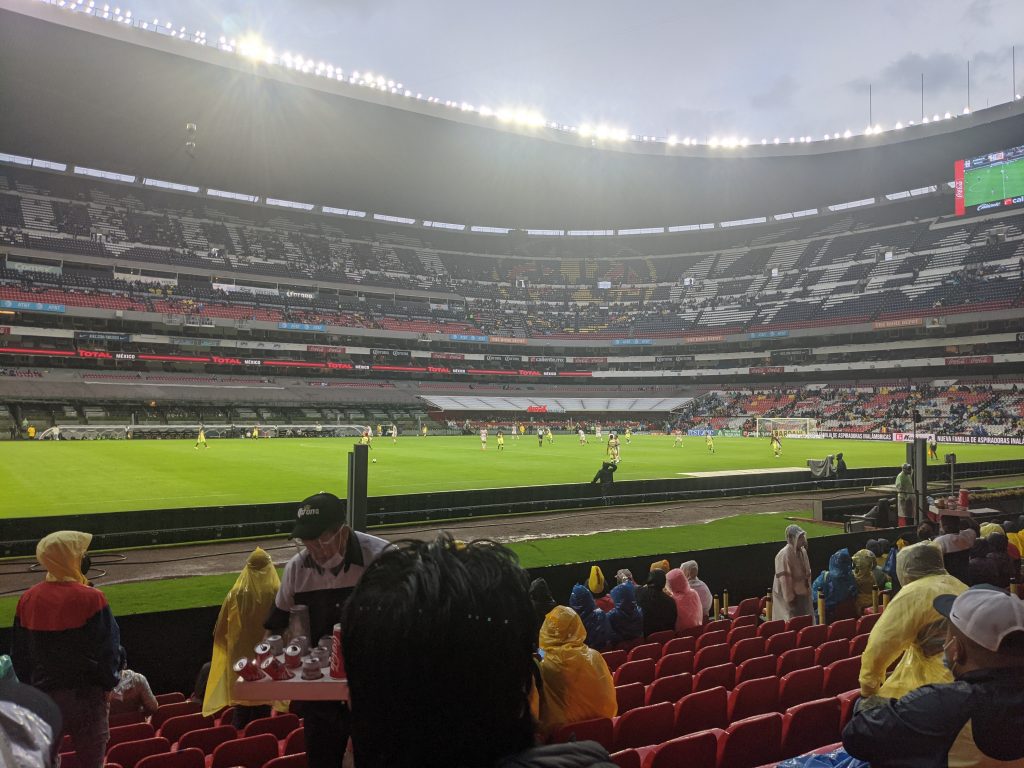
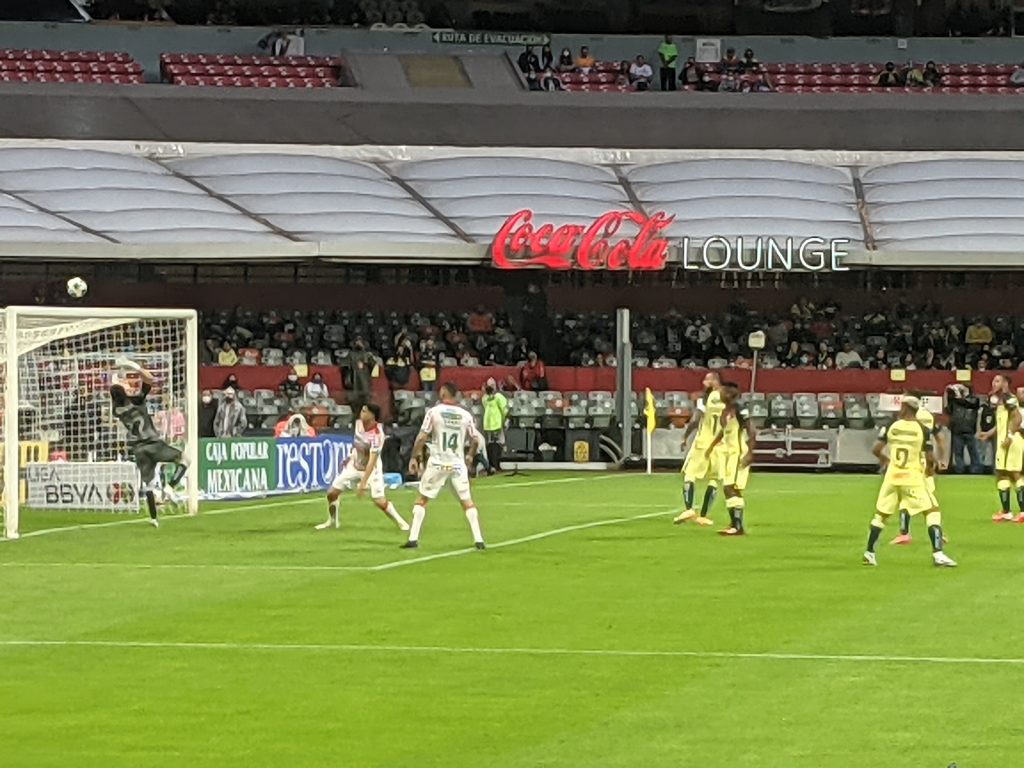
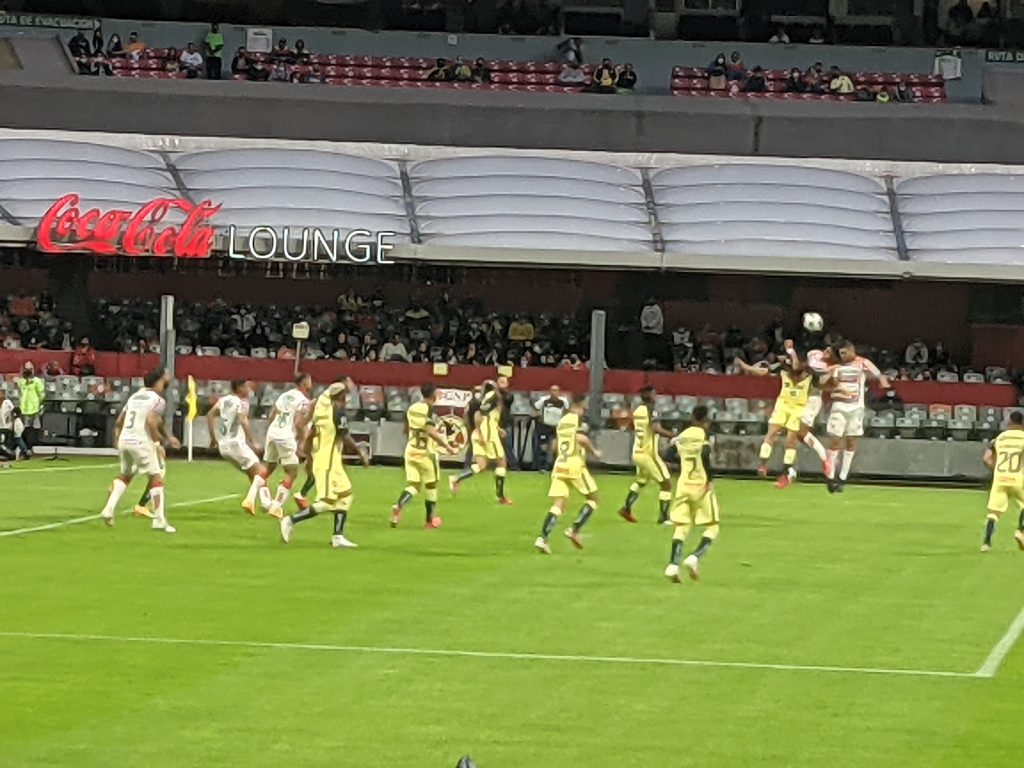
Some of us after the match. Our host is in the middle, next to me.
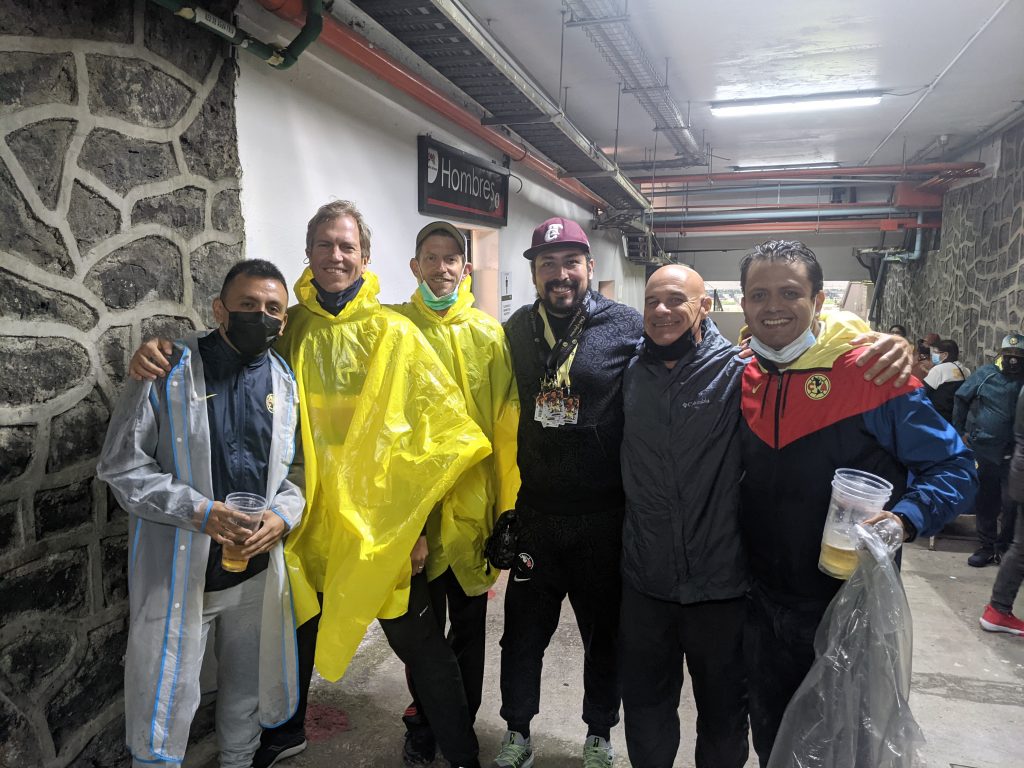
The Canals of Xochimilco
The Aztec capital was built on a man made island in the middle of a large lake. The Spanish destroyed the city and filled in the lake. This is what Mexico City is built on top of. In the southern part of Mexico City there is an area called Xochimilco that still has some of the original canals and chinampas (man made islands) the Aztecs built. Most Mexicans experience this in boats that can seat 10-15 people. It’s a great excuse to eat and drink with friends and family. It’s also kind of a boisterous tourist trap on the weekends.
I had a chance to go on an Airbnb experience to see a quieter part of this complex in a small canoe with a trained biologist to explore a chinampa owned by a non-profit that grows vegetables in a traditional organic way. It was an incredibly tranquil experience in the middle of crowded, crazy Mexico City.
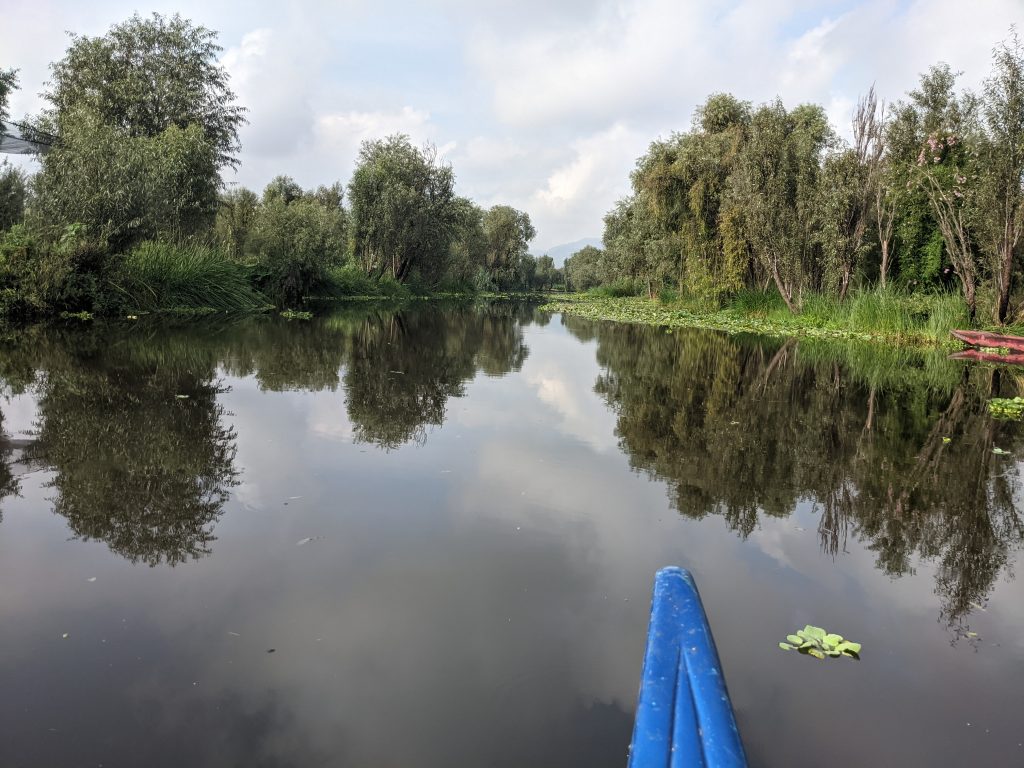
There are still over 190 kilometers of waterways that surround these man made islands in the Xochimilco area. This is only estimated to represent about 2% of the total area the Aztecs had developed. This engineering feat may be even more impressive than the actual cities they built. Many of these chinampas are over 1,000 years old according to our guide.
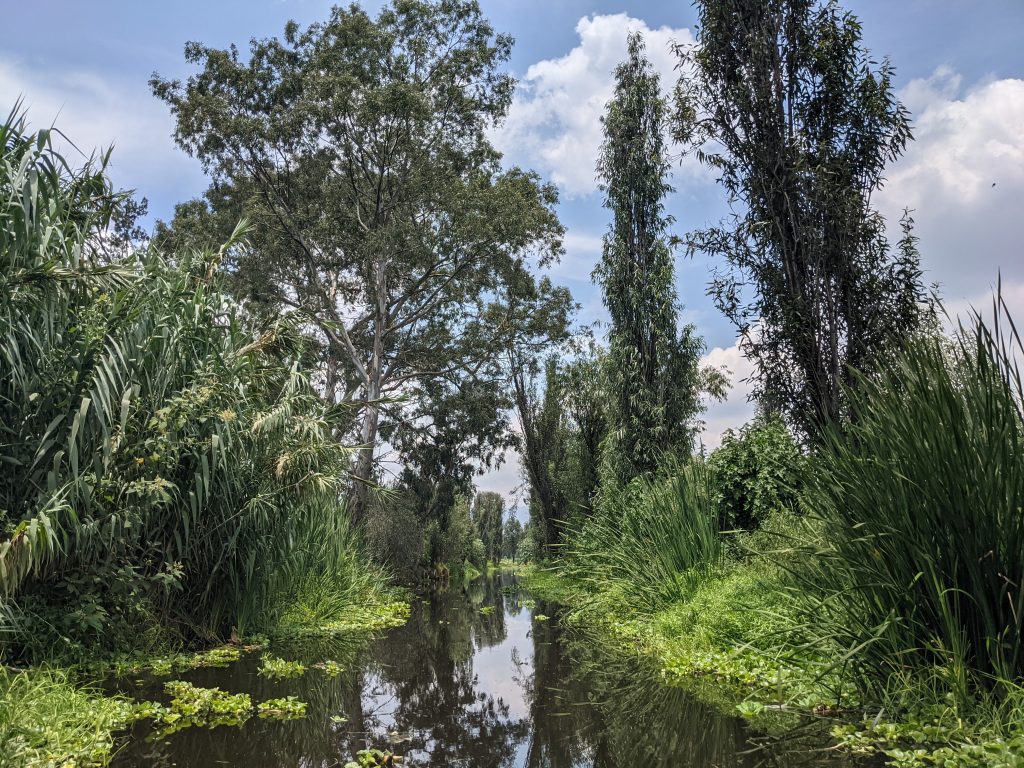
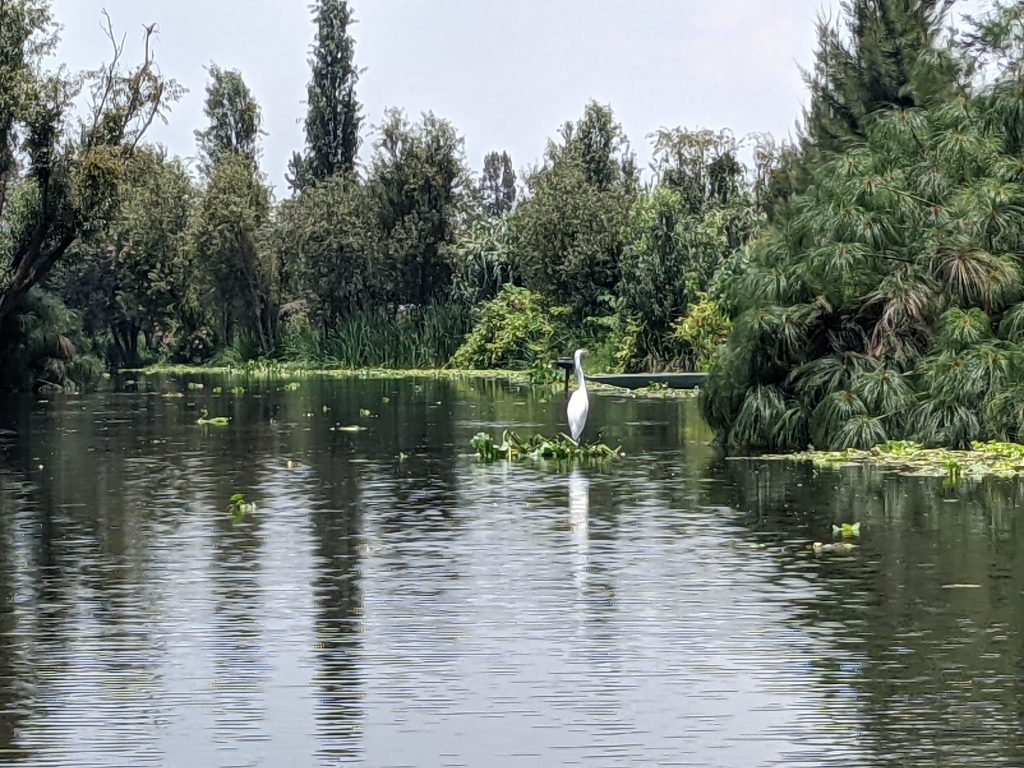
Our guide and the canoe we were on.
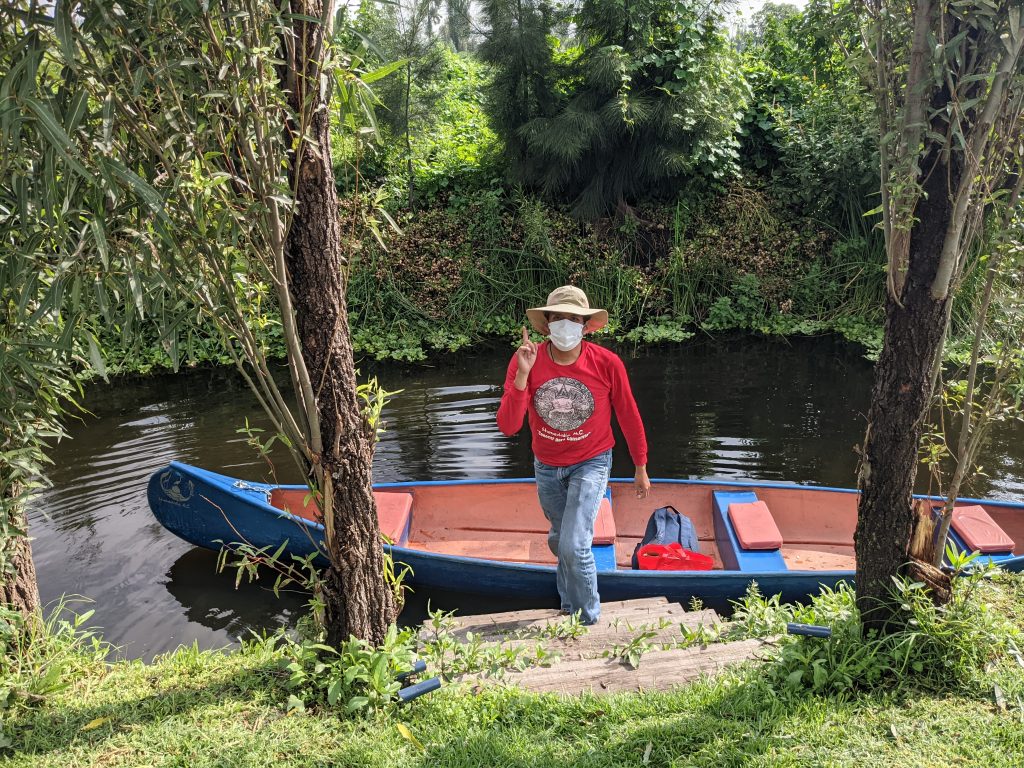
A small portion of the agriculture grown on the chinampa. The sunflowers are primarily to add some beauty and to help bees with their pollination.
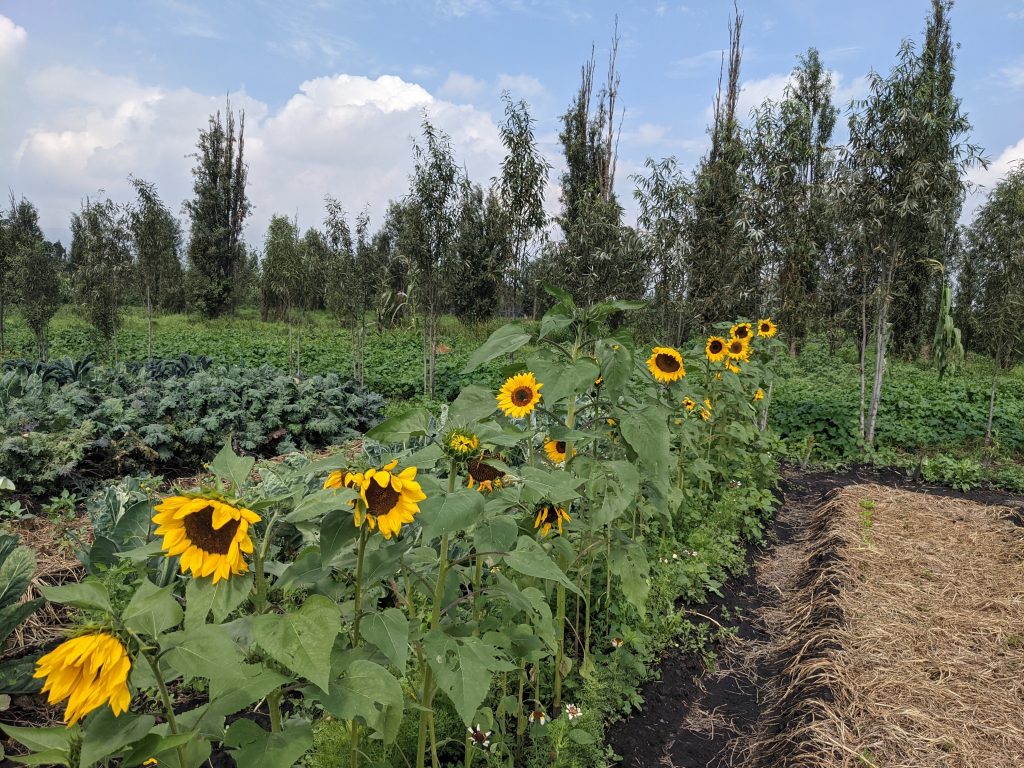
Where we had a wonderful lunch made from ingredients they grew on the chinampa.
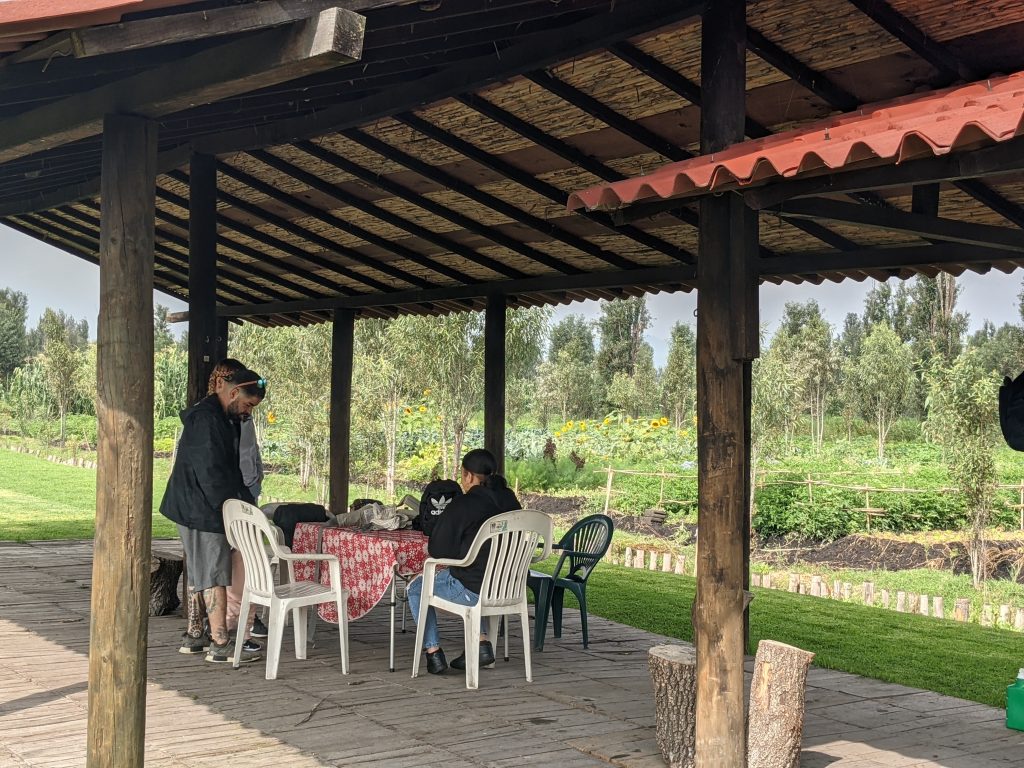
I got to have dinner and ice cream with a former Accenture colleague I haven’t seen for a long, long time. He’s back in his hometown of Mexico City doing a tech startup.
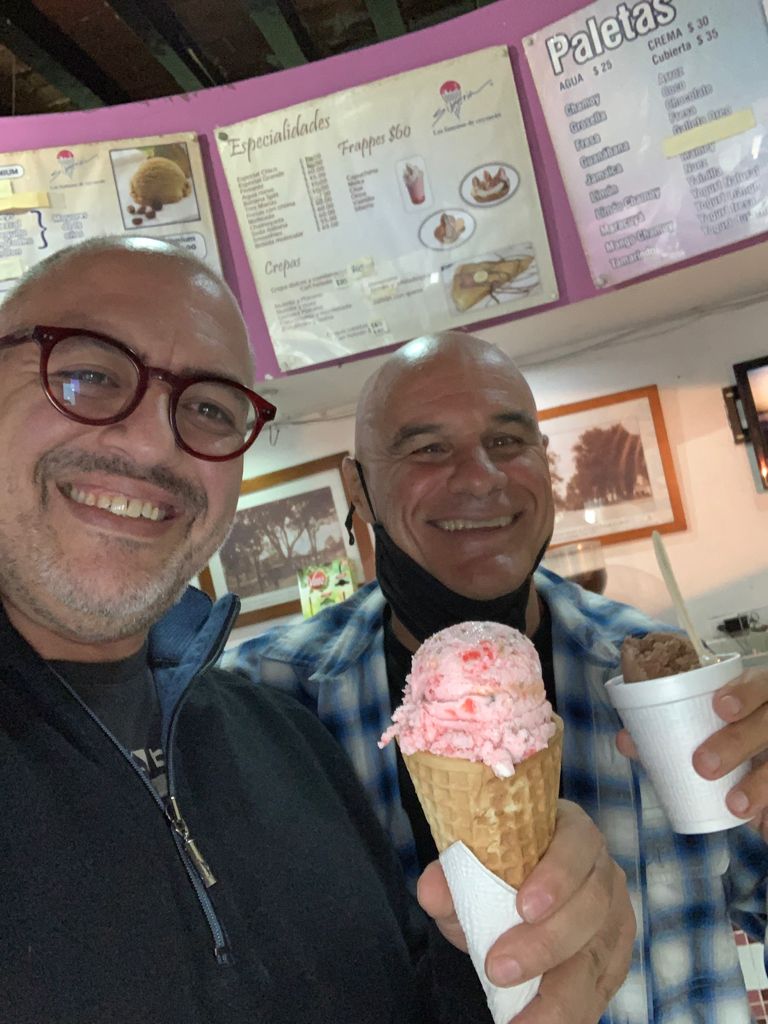
I had dinner with a friend from Playa del Carmen who is now living in Mexico City and dating a wonderful local girl here.
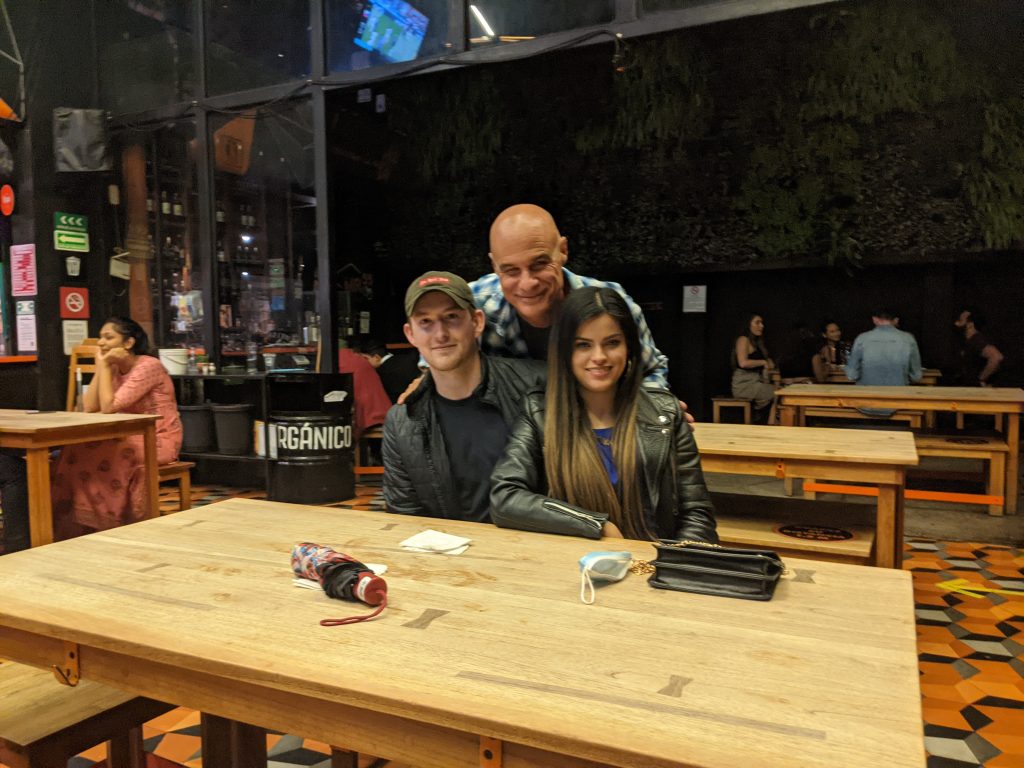
Catedral Metropolitana
I visited the Catedral Metropolitana, which is the largest church in Latin America. It’s not the most architecturally stunning building, both inside and outside, but it’s definitely big.
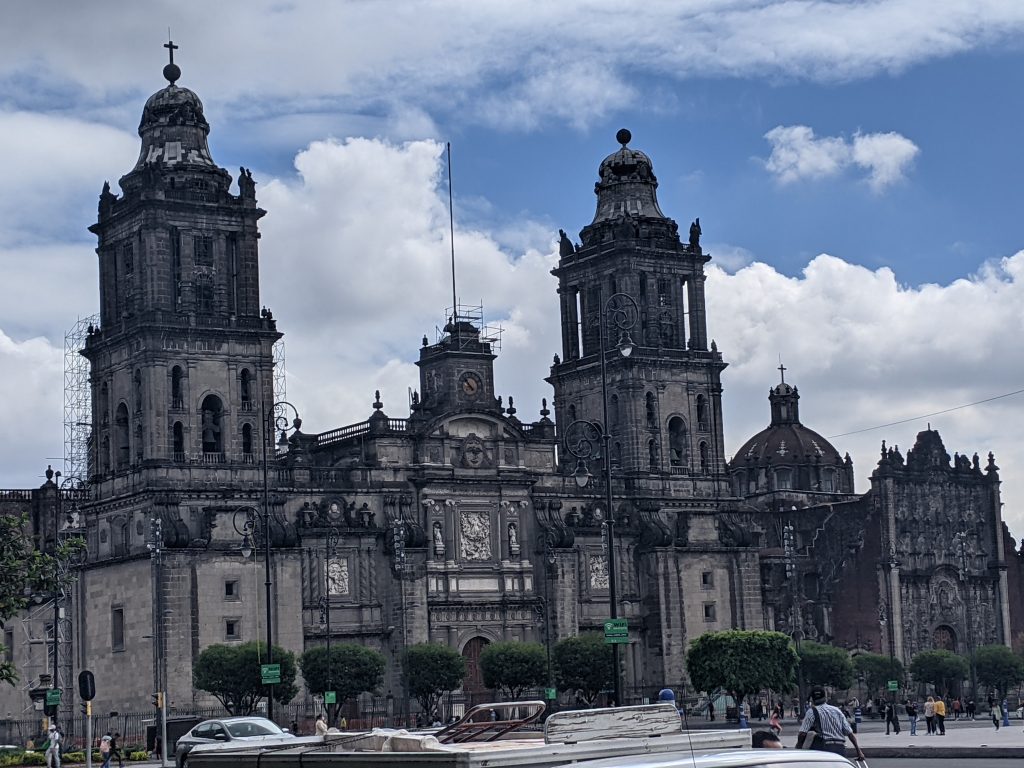
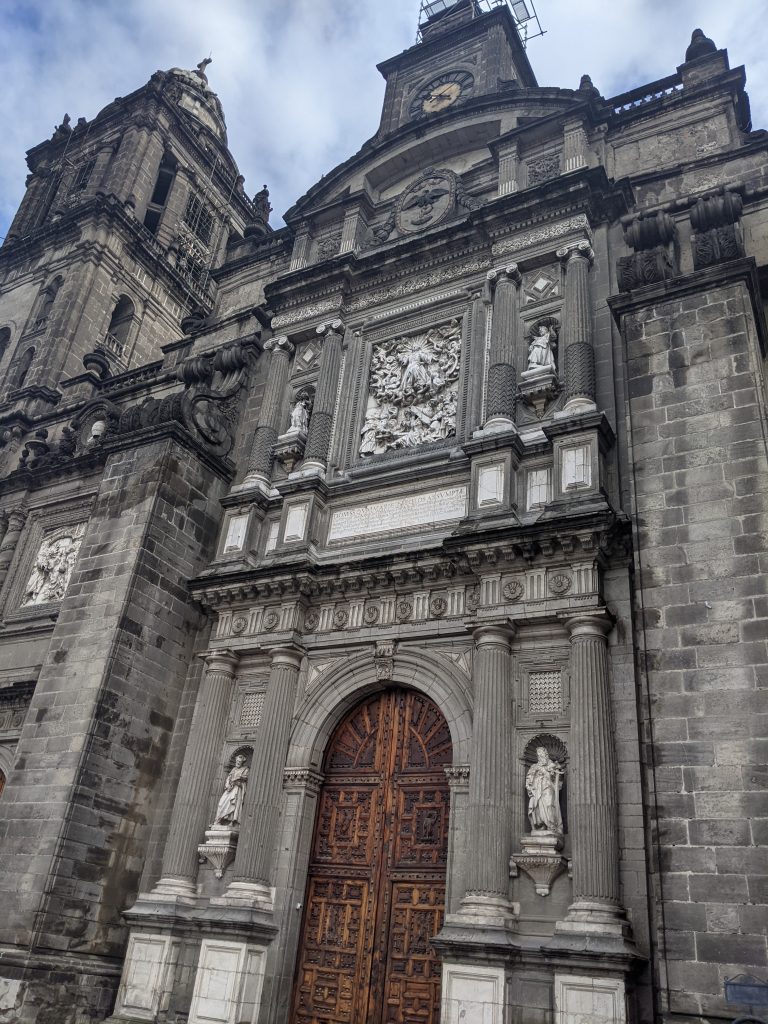
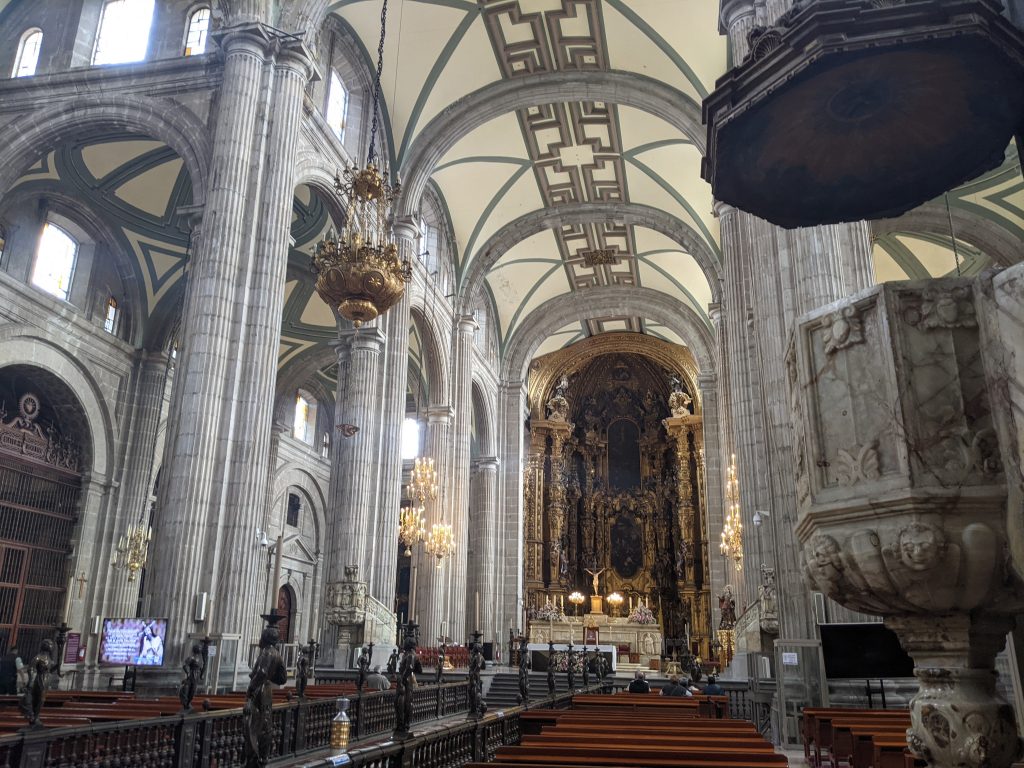
When the Spanish conquered the Aztecs they raised the entire Aztec city and filled in the lake and canals surrounding the city. One of the few remaining ruins is a small part the Templo Mayor right next to the cathedral.
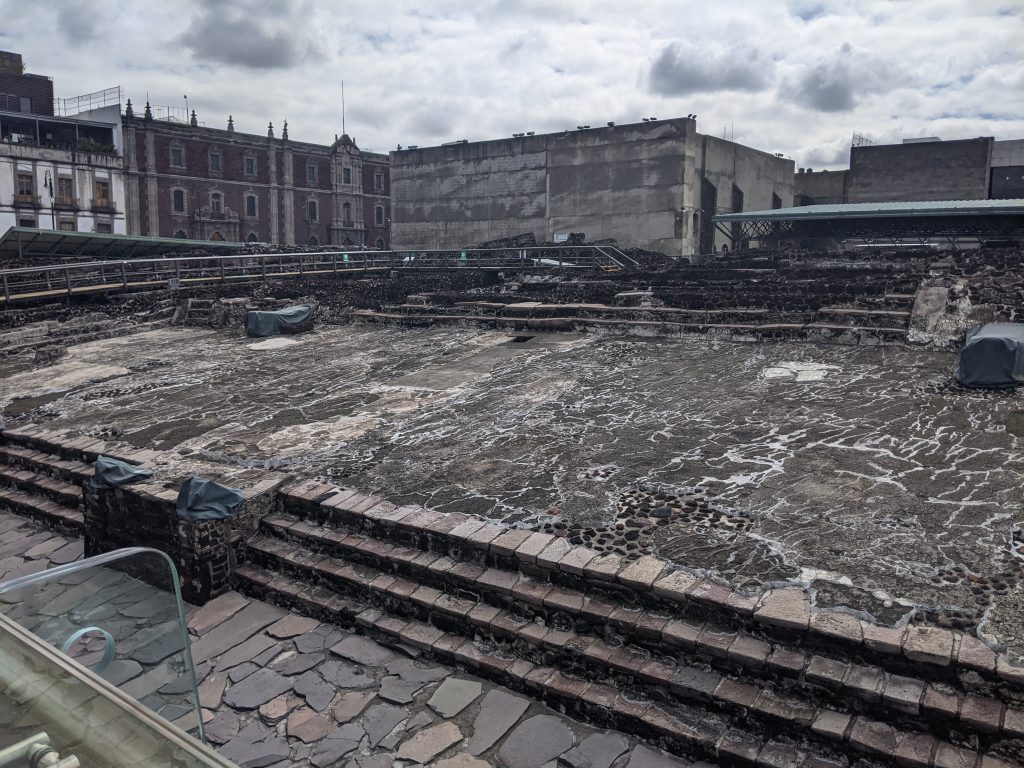
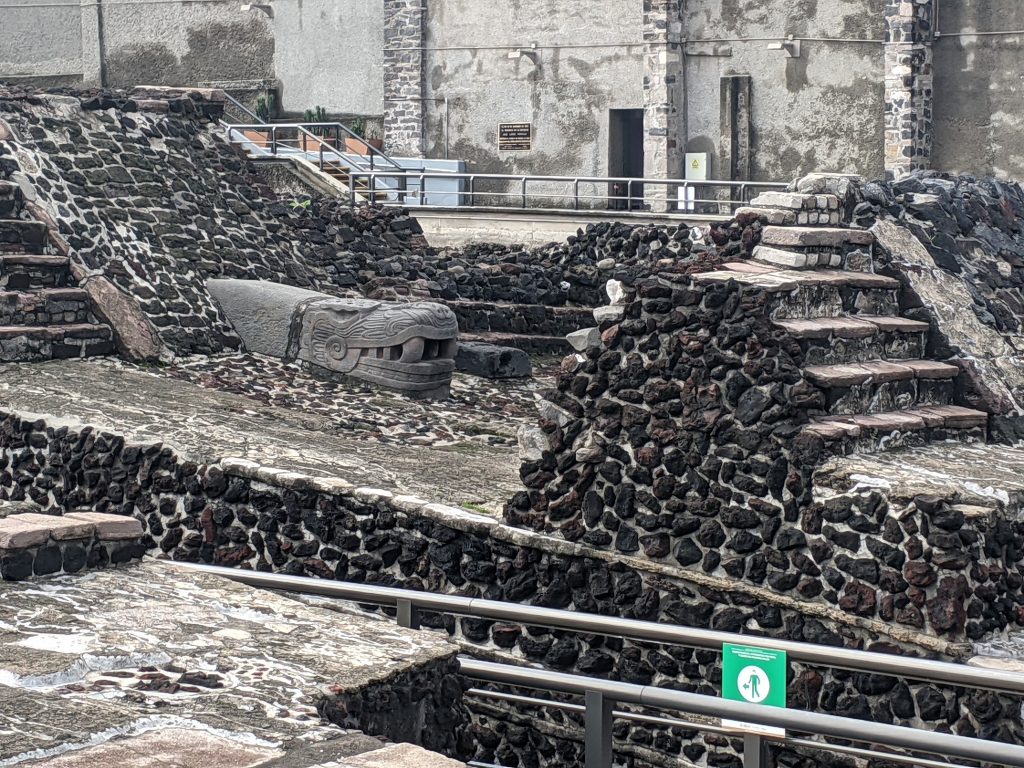
Torre Latinamericana Building
The 44 story Torre Latinamericana Building is widely recognized internationally as an engineering and architectural landmark since it was the world’s first major skyscraper successfully built on highly active seismic zone. There’s a great viewing platform at the top that provides a great 360 degree view of the city.
The view of the Building from the Francisco Madero walk street.

Looking down at the Catedral Metropolitana and the huge Zocolo square.
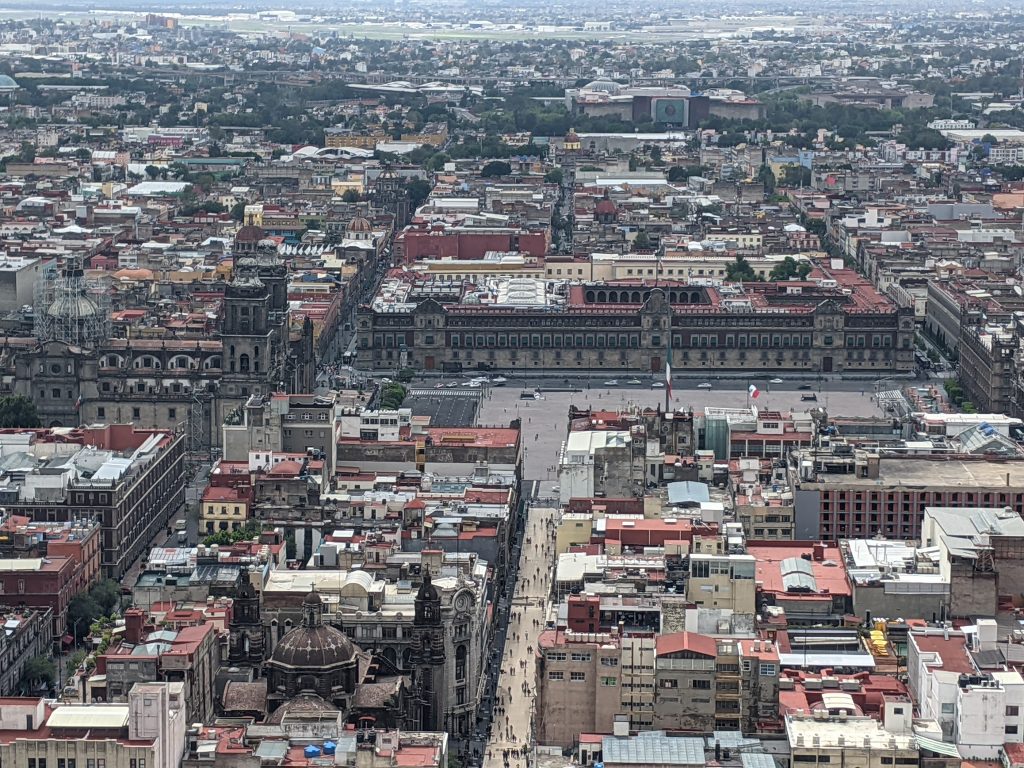
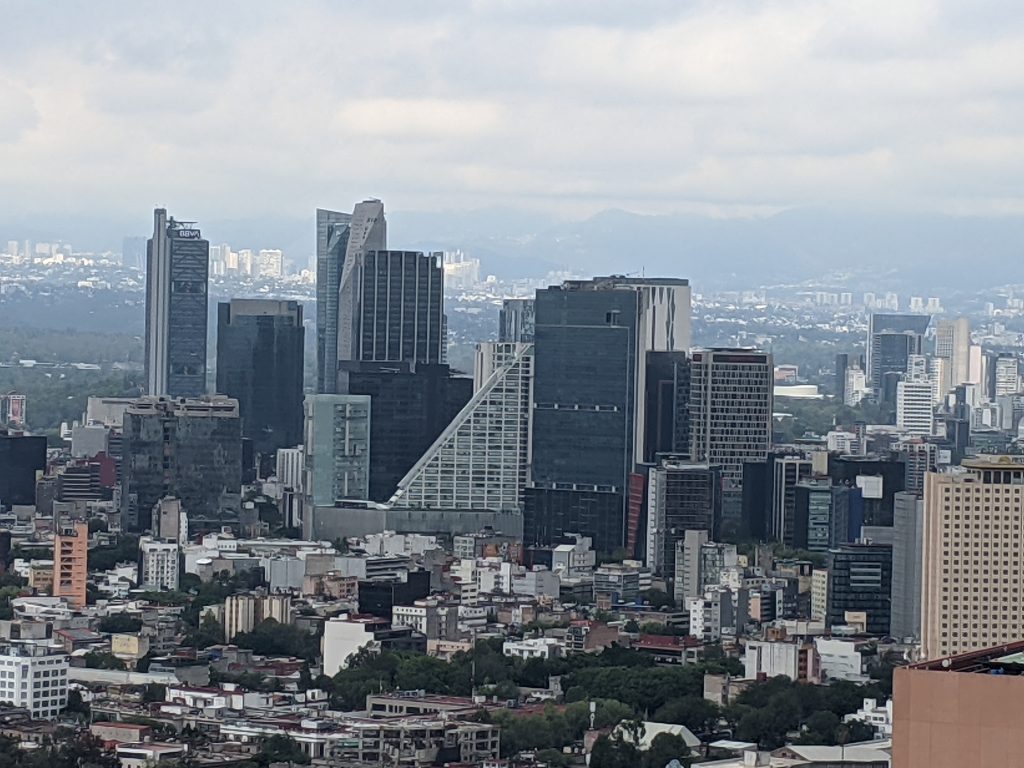
You can see some of the poorer neighborhoods hugging the hills on the edges of the city.
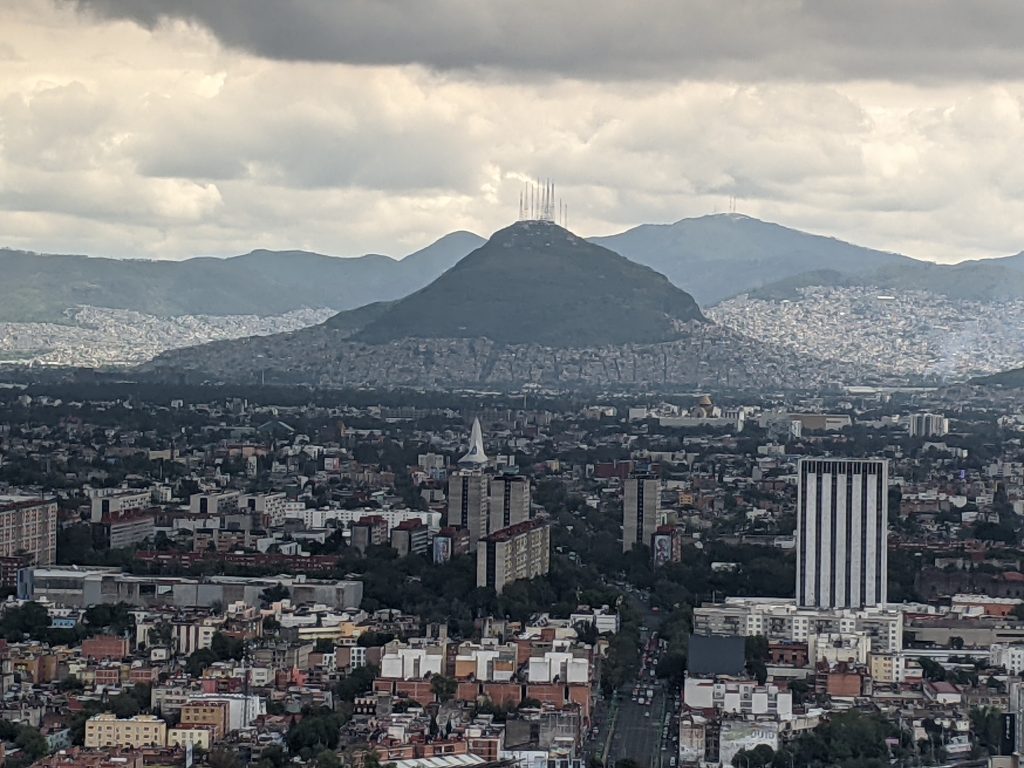
Looking down at the magnificent Palacio de Bellas Artes.
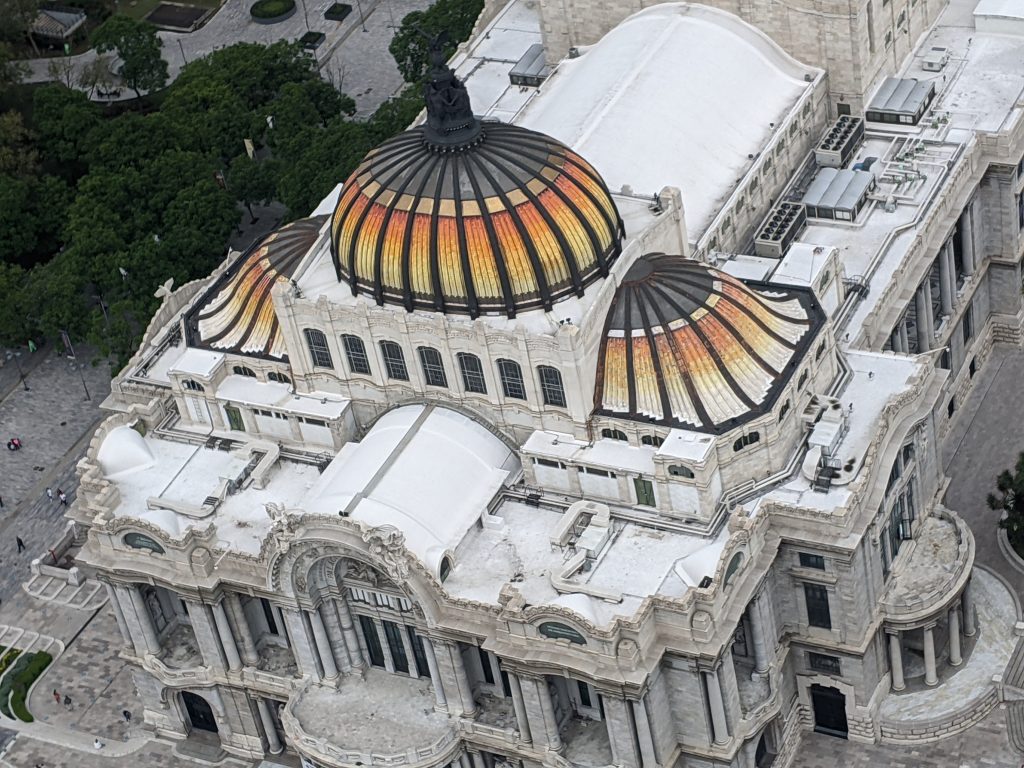
Palacio de Bellas Artes
The Palacio de Bellas Artes has been called the “art cathedral of Mexico” and hosts performing arts events, literature events and plastic arts galleries and exhibitions, including important permanent Mexican murals.
A ground level view of the Palacio
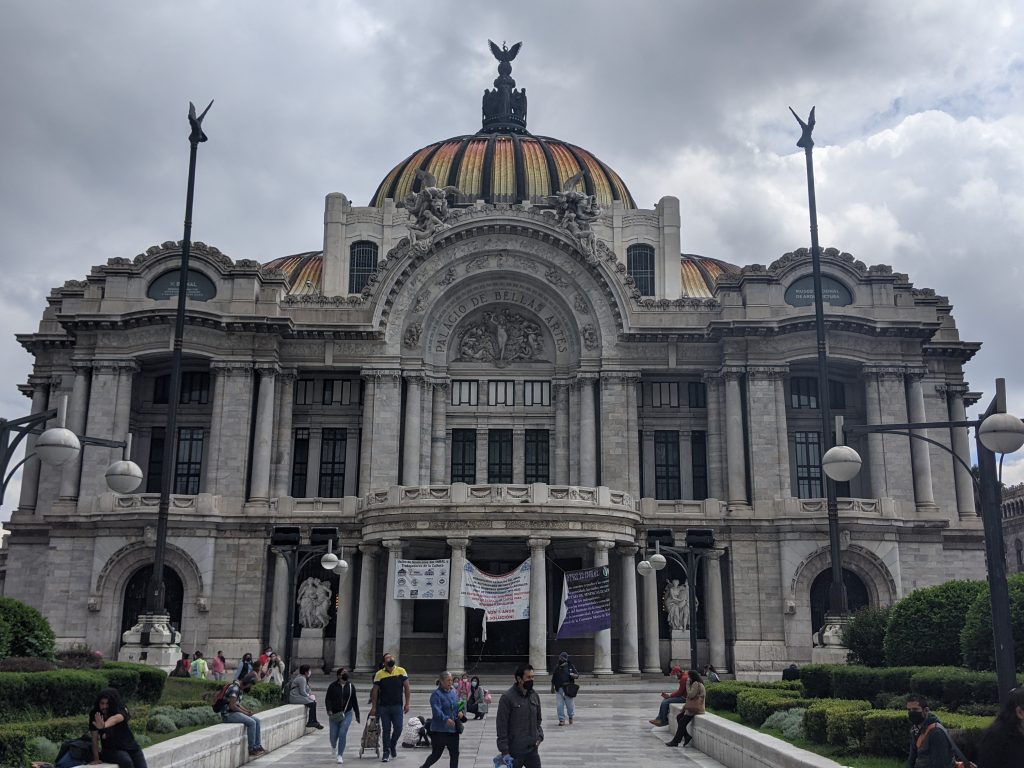
While the Palacio de Bellas Artes looks impressive from the outside it’s even more so inside with a wonderful art deco marble design and a small museum with fantastic, huge, colorful murals by Mexican artist Diego Rivera.
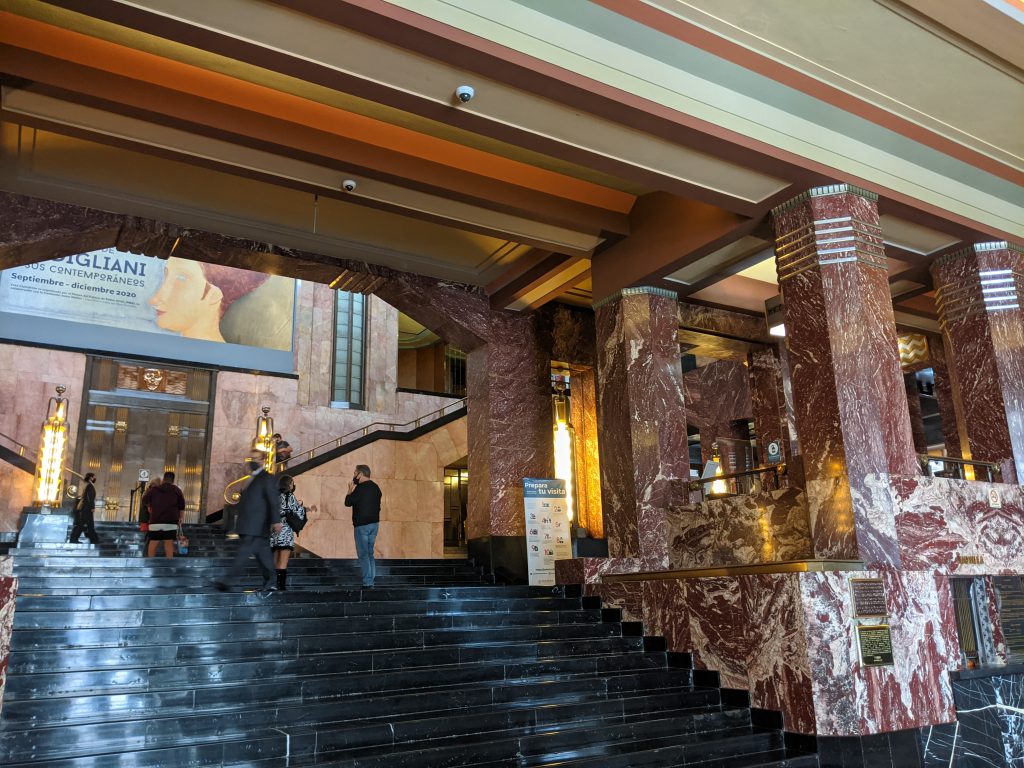
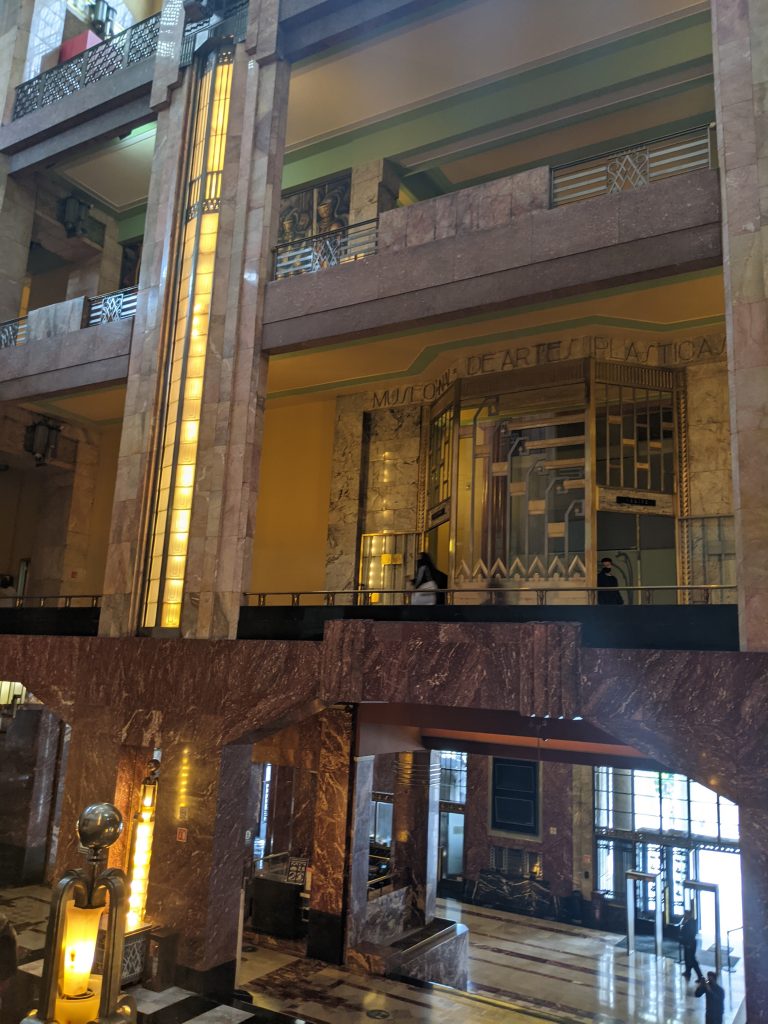
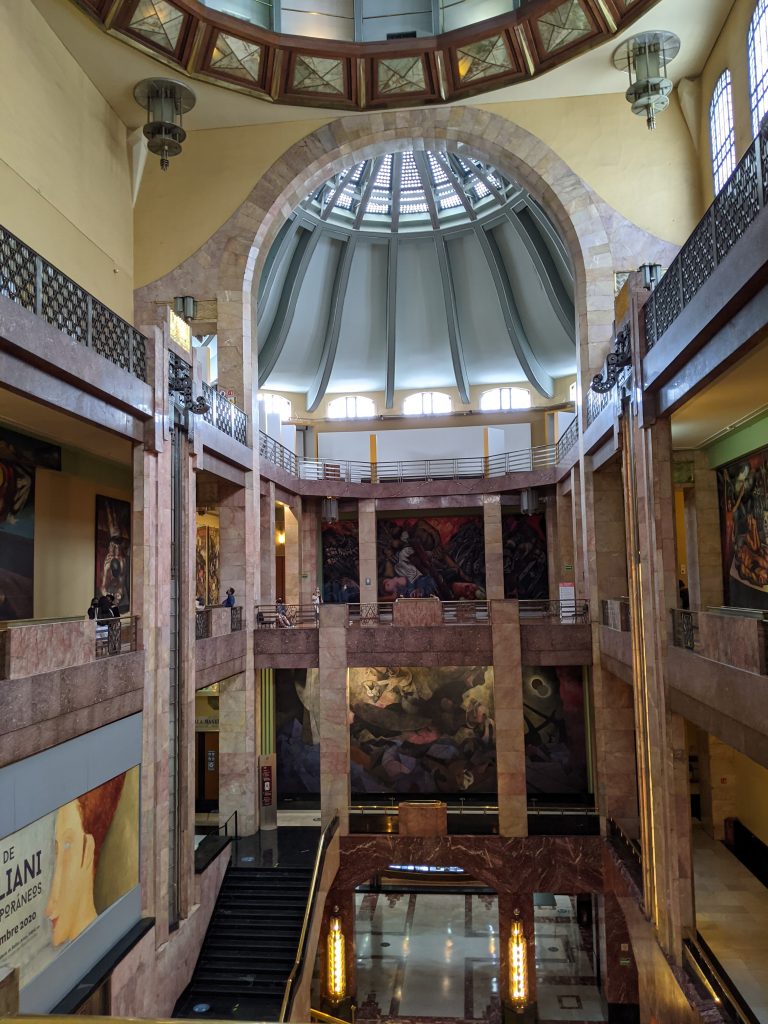
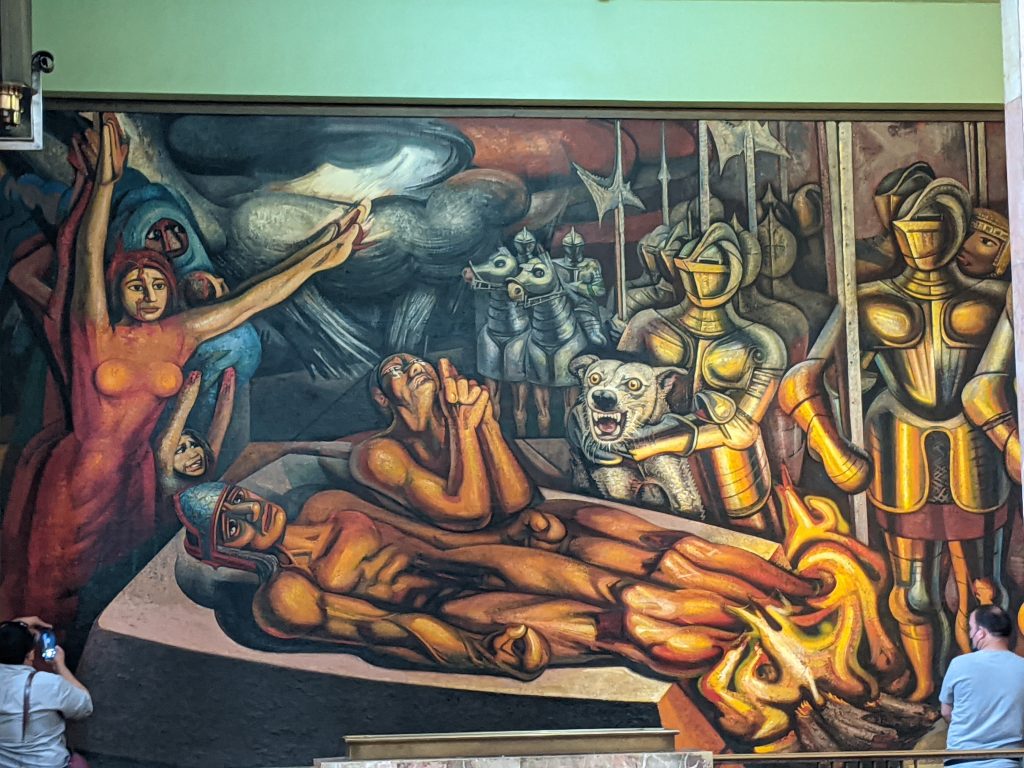
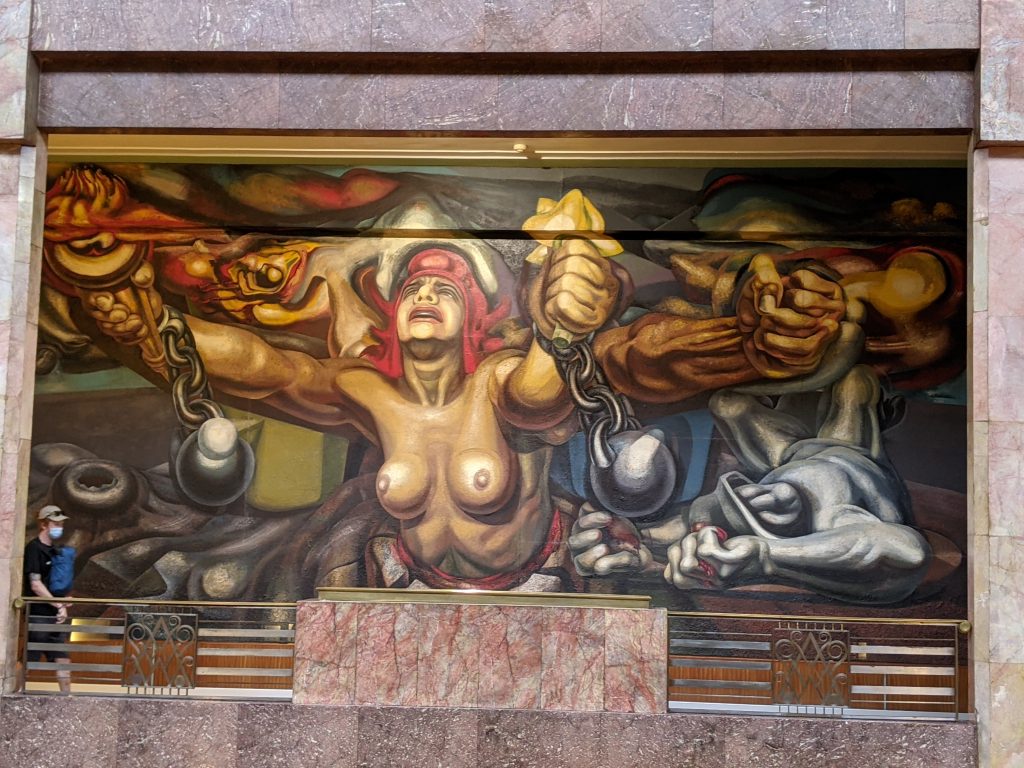
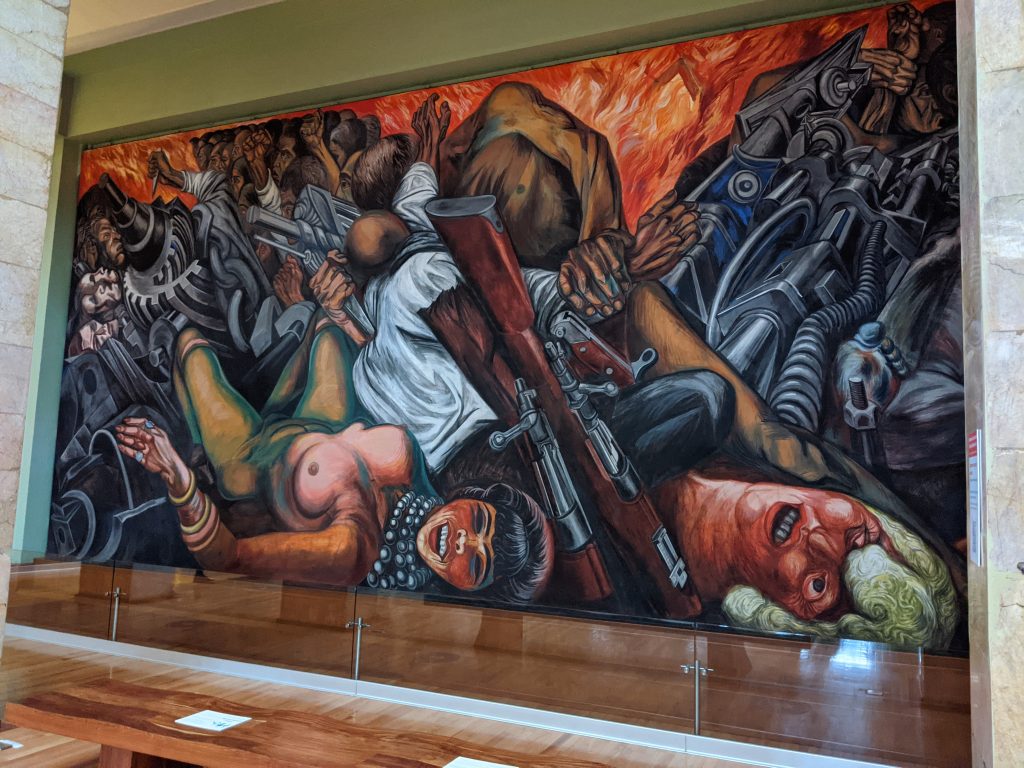
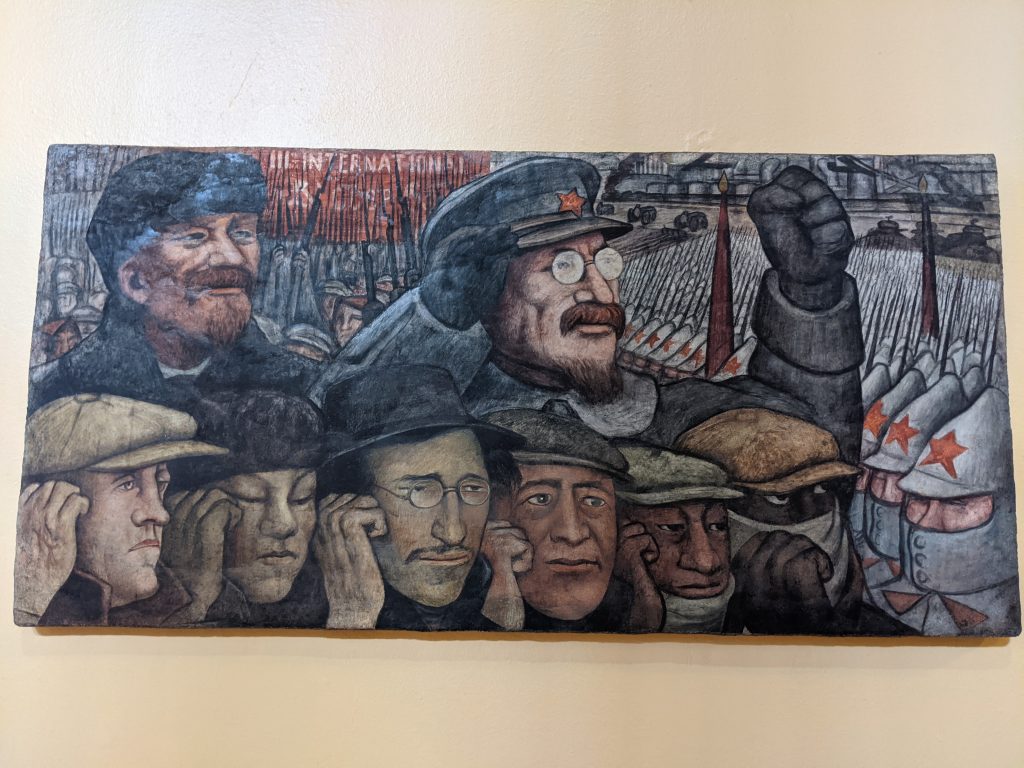
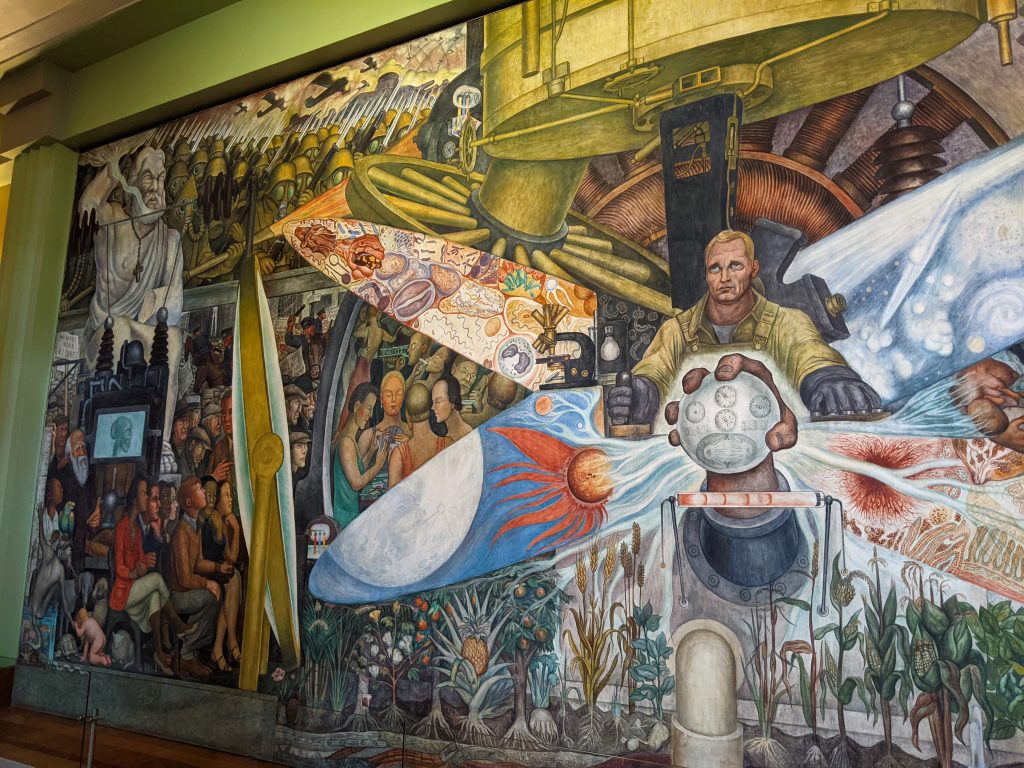
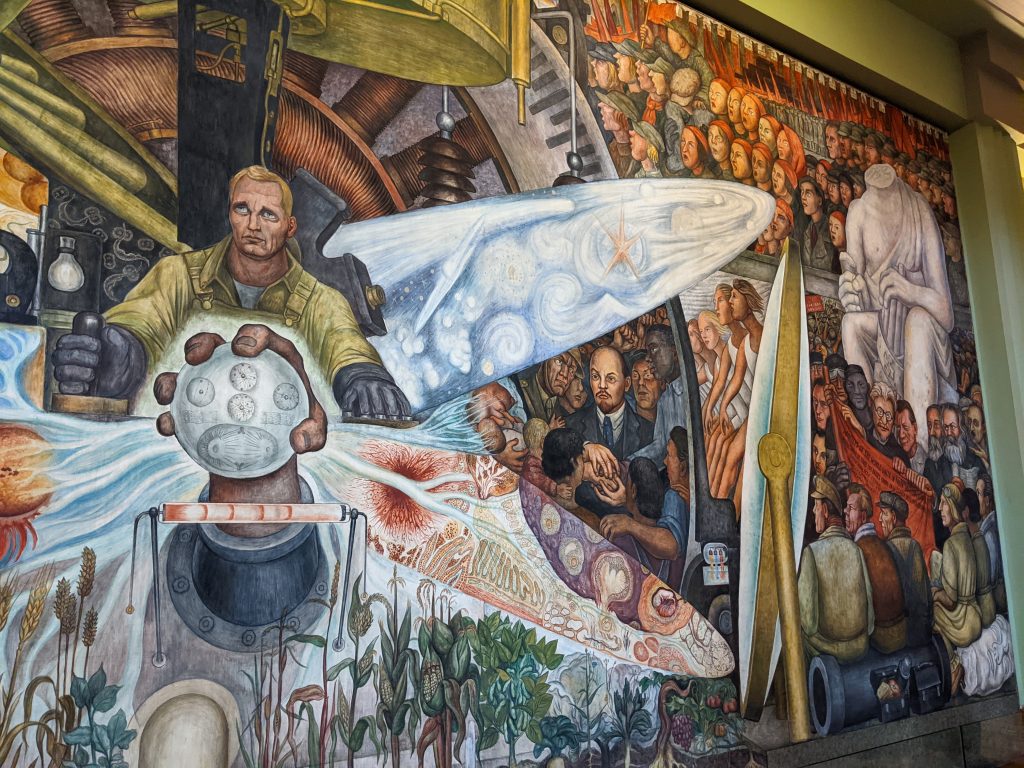
The Museo Nacional de Antropologia
The Museo Nacional de Antropologia is a world class anthropological museum with significant artifacts from all of Mexico’s major pre Spanish civilizations. Below is just a tiny smattering of all the things to see there.
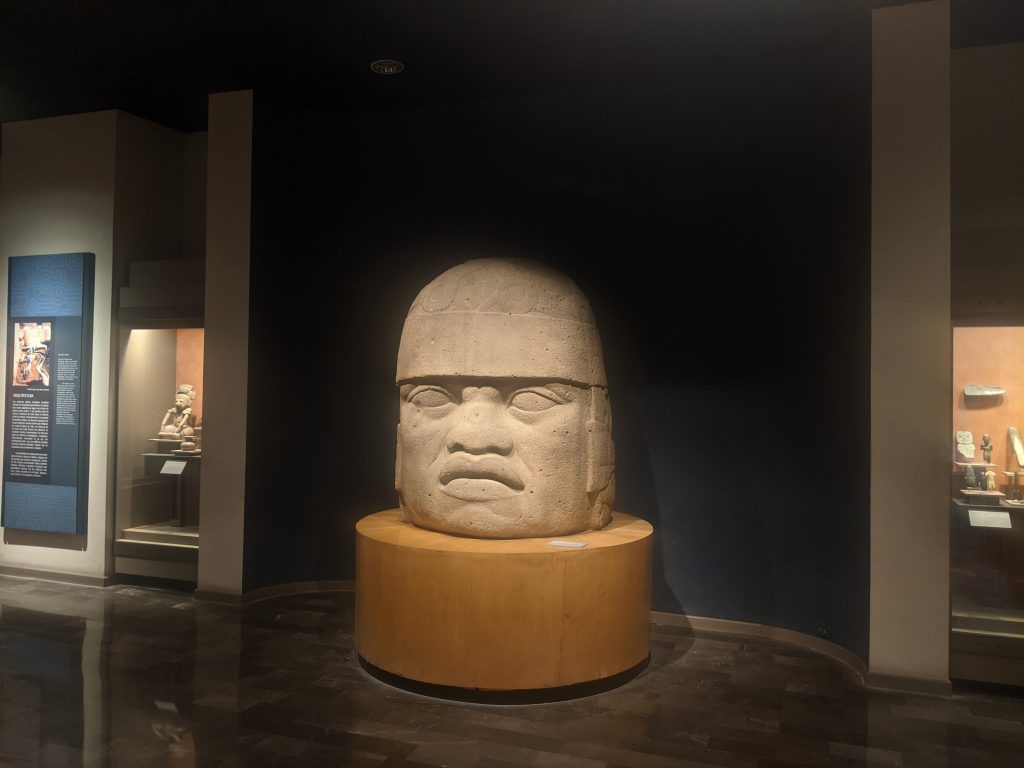
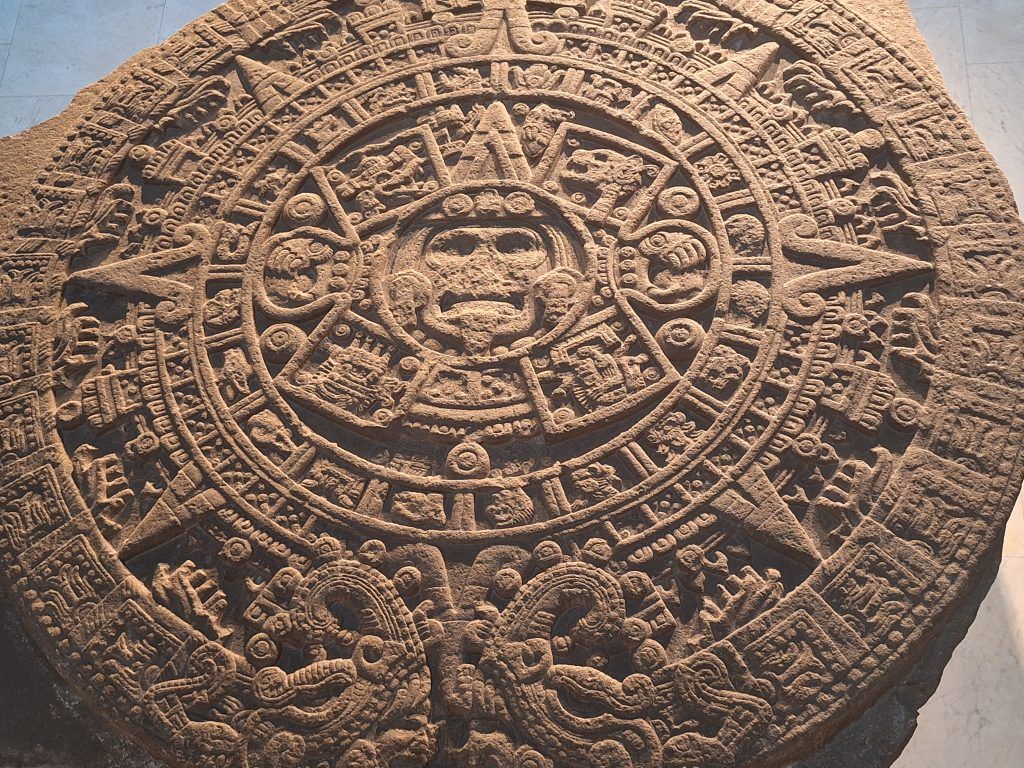
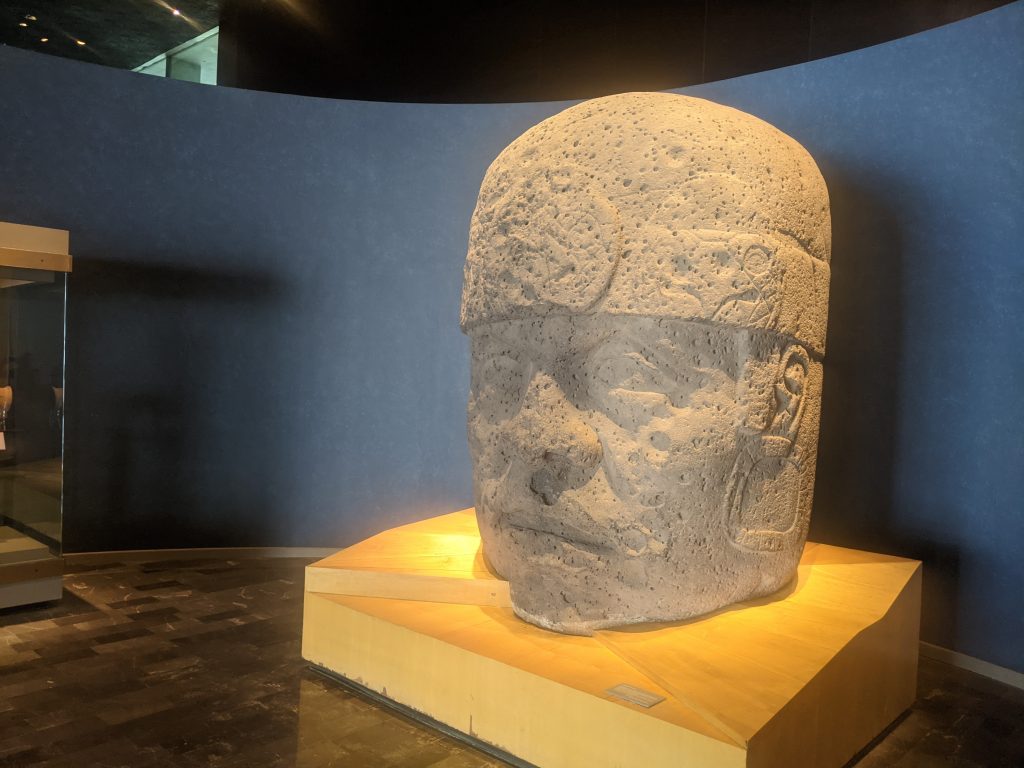
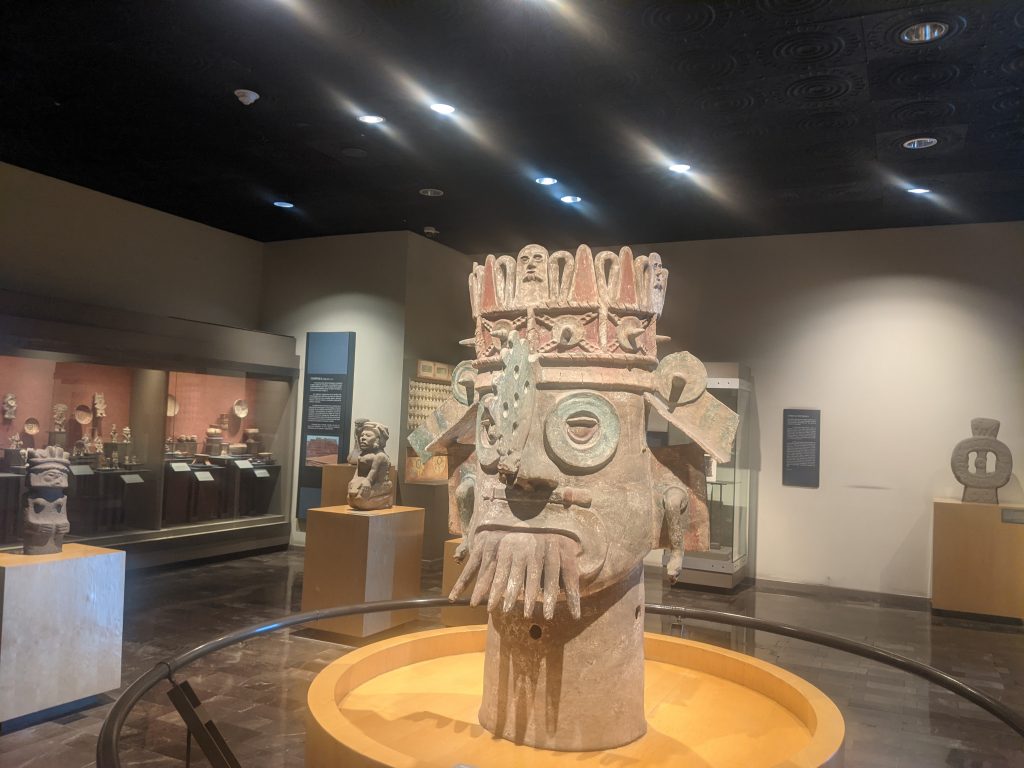
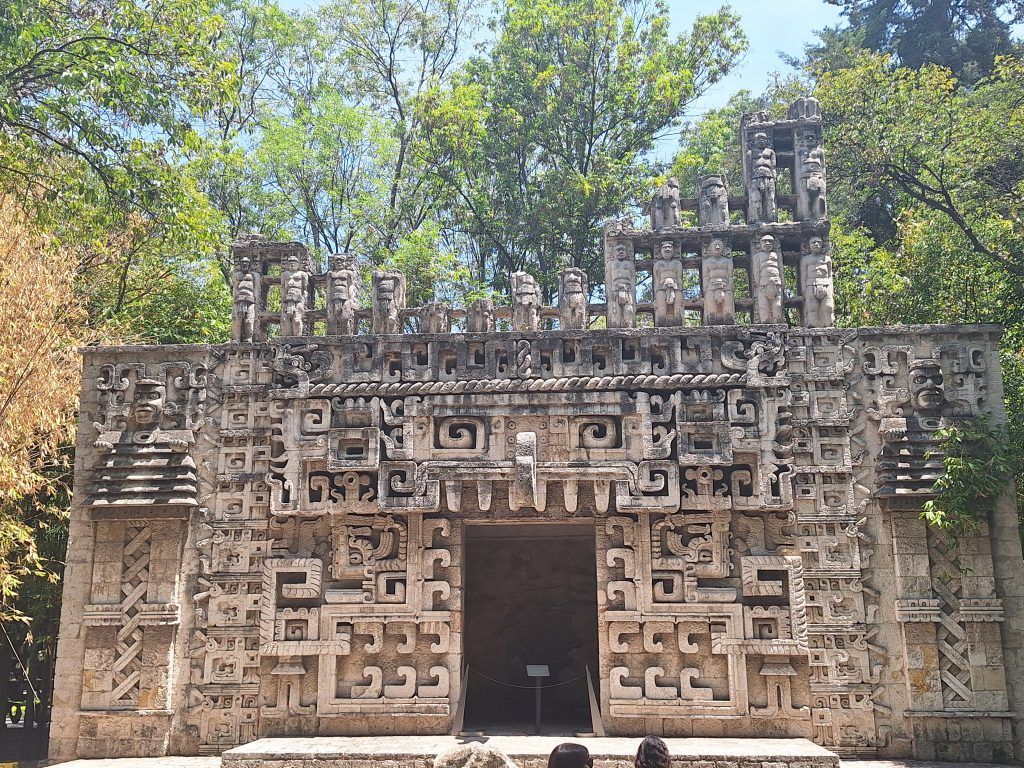
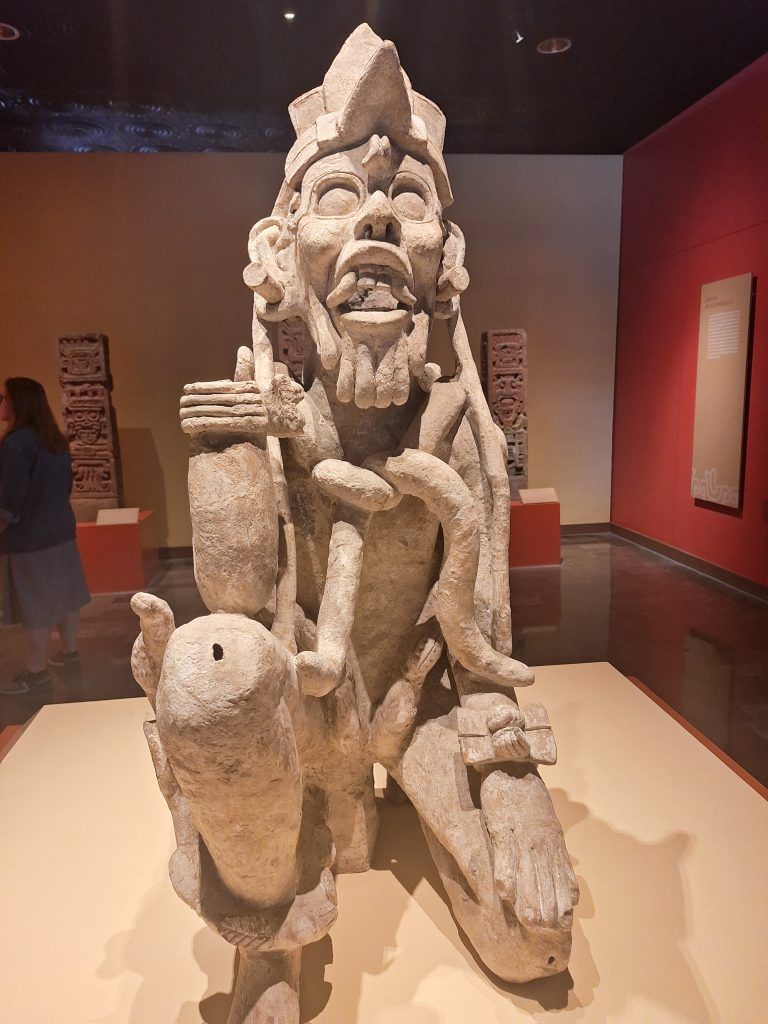
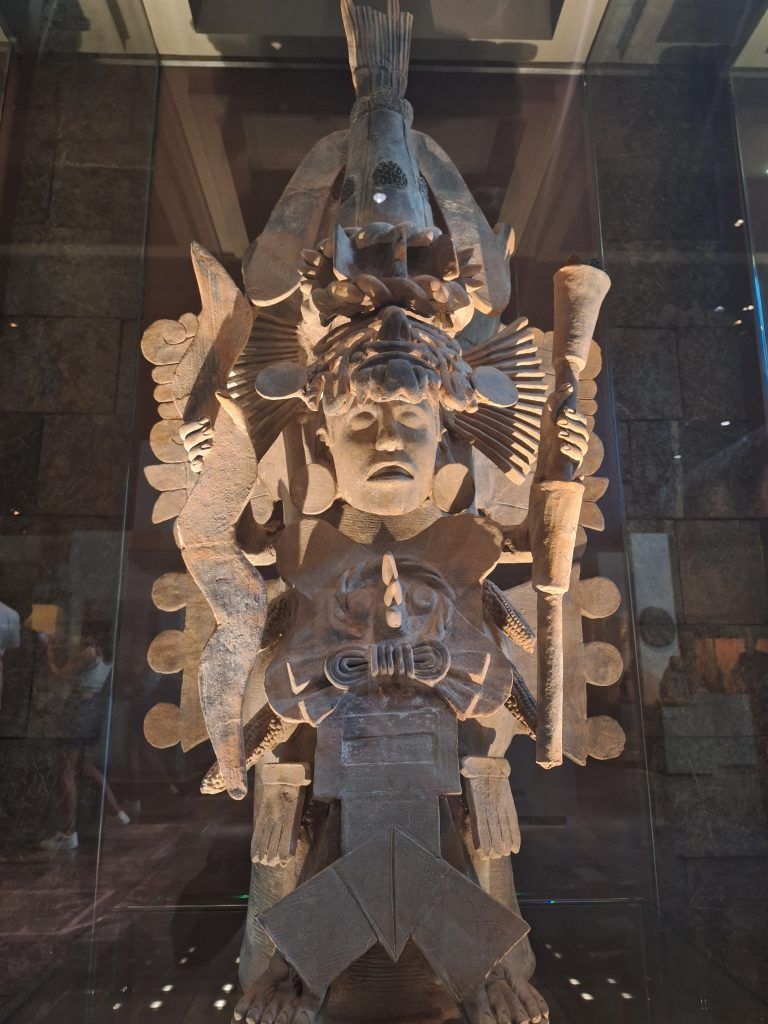
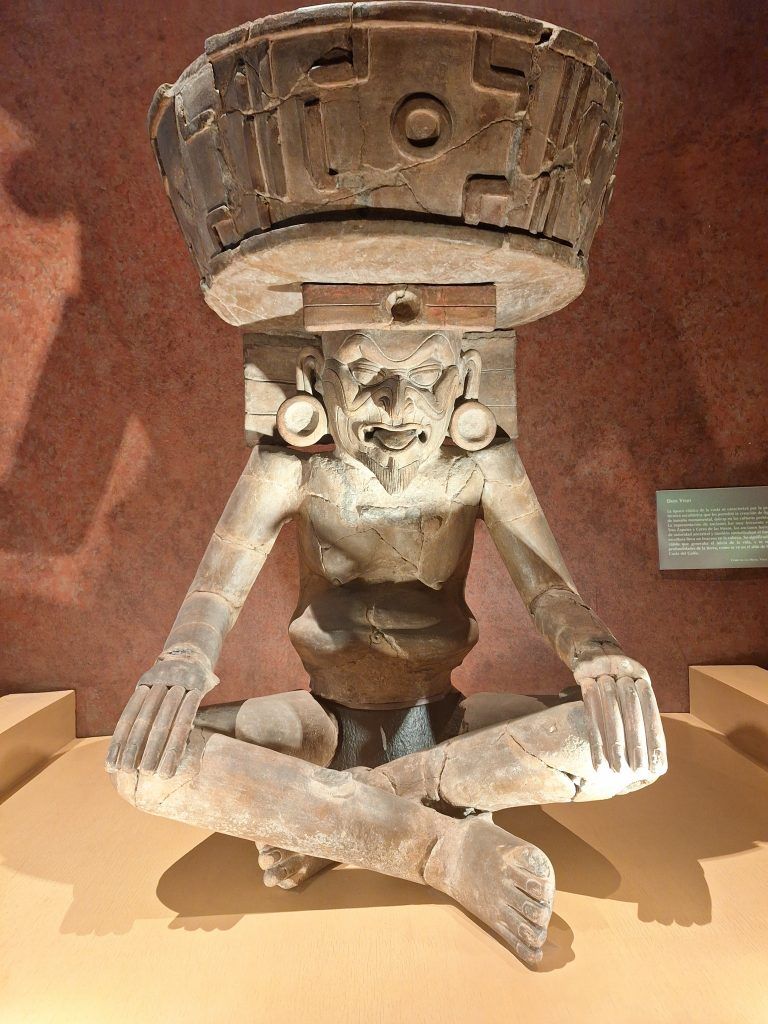
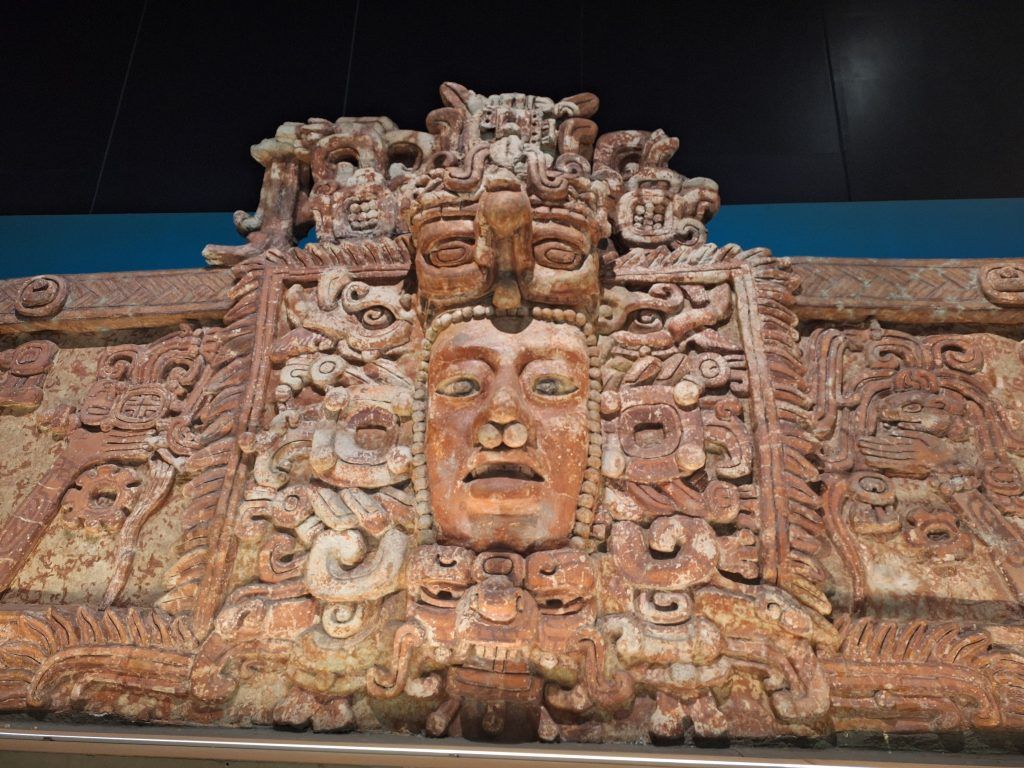
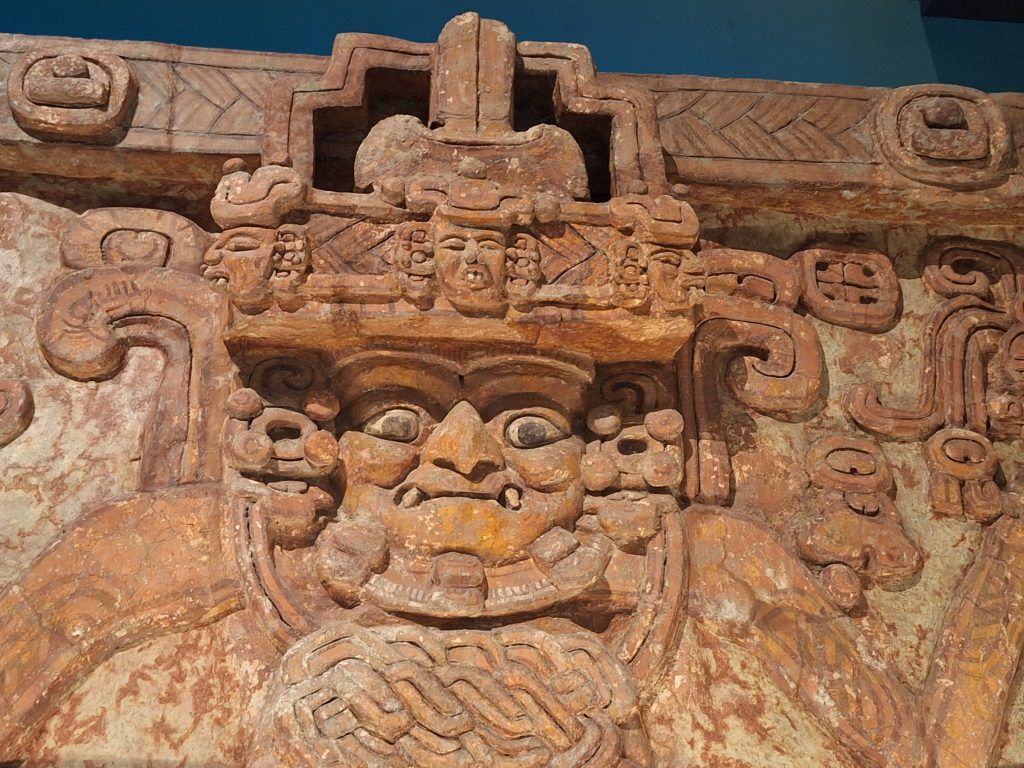
Chapultepec Castle
Chapultepec Castle is located on top of Chapultepec Hill in Mexico City’s Chapultepec park. The name Chapultepec is the Nahuatl word chapoltepēc which means “on the hill of the grasshopper”. It is located at the entrance to the huge Chapultepec Park complex which houses a slew of musuem’s and Mexico City’s Zoo.
The site of the hill was a sacred place for Aztecs, and the buildings atop it have served several purposes during its history, including serving as a military academy, imperial residence, presidential residence and observatory. Since February 1939 it has been the National Museum of History.
During the Battle of Chapultepec, Mexican troops stood strong and preferred to face death defending their country, as opposed to surrendering to American forces. On September 13, 1847, the Niños Héroes (“Boy Heroes”) died defending the castle while it was taken by United States forces during the Battle of Chapultepec of the Mexican–American War. They are honored with a large mural on the ceiling above the main entrance to the castle, as shown below.
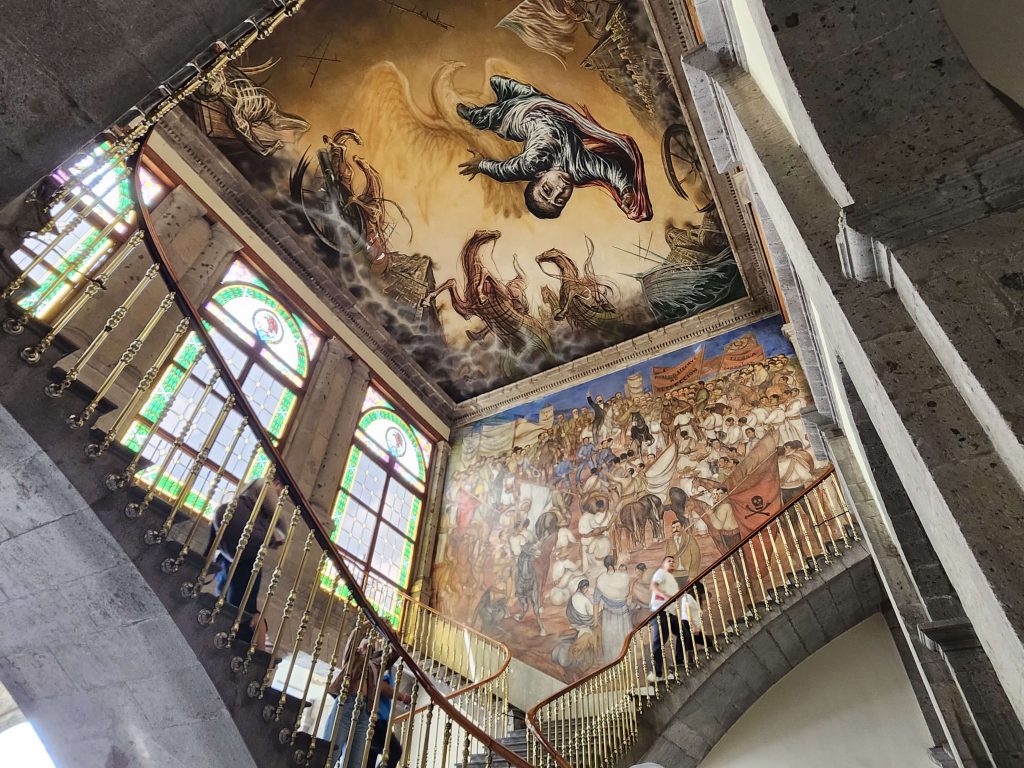
Conversely, the United States Marine Corps honors its role in the Battle of Chapultepec and the subsequent occupation of Mexico City through the first line of the “Marines’ Hymn”, From the Halls of Montezuma. It is just one of the many events in the twisted history of these two countries.
The outside view of the entrance to the castle.
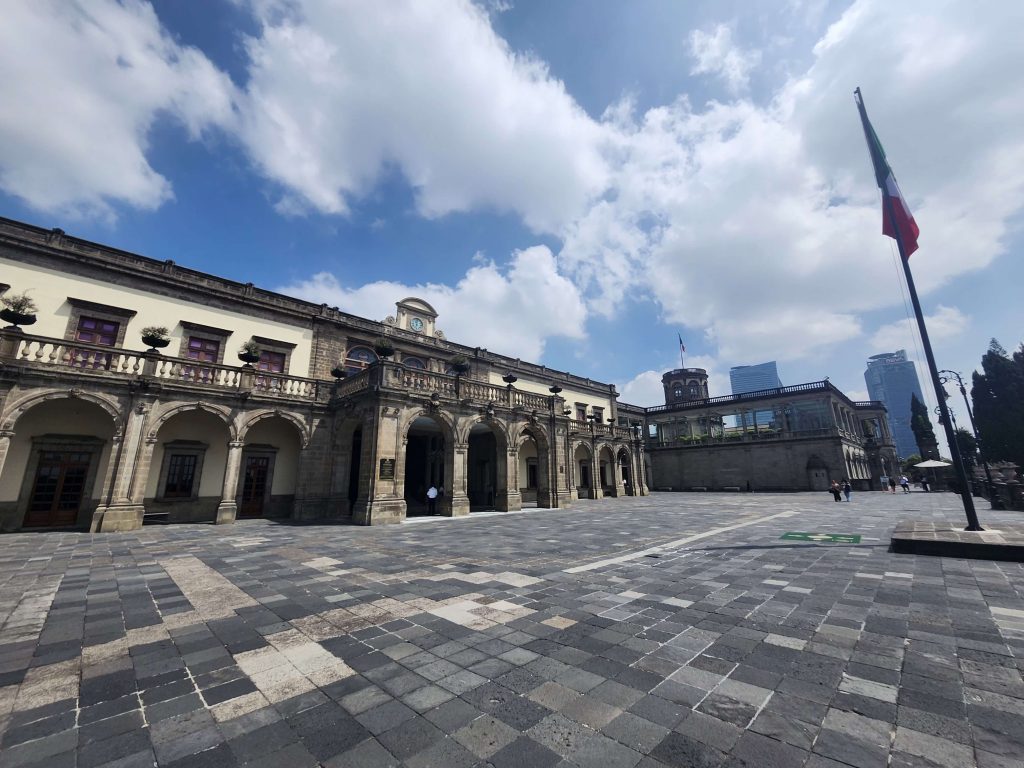
Part of the main hall on the inside.
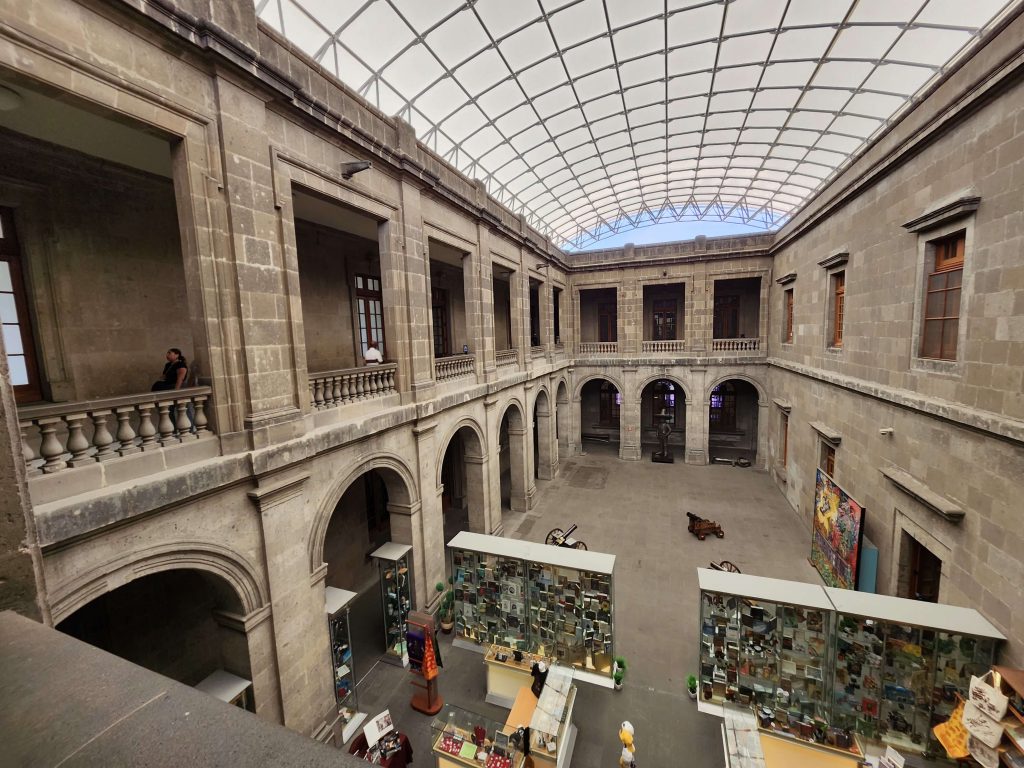
The primary dining room.
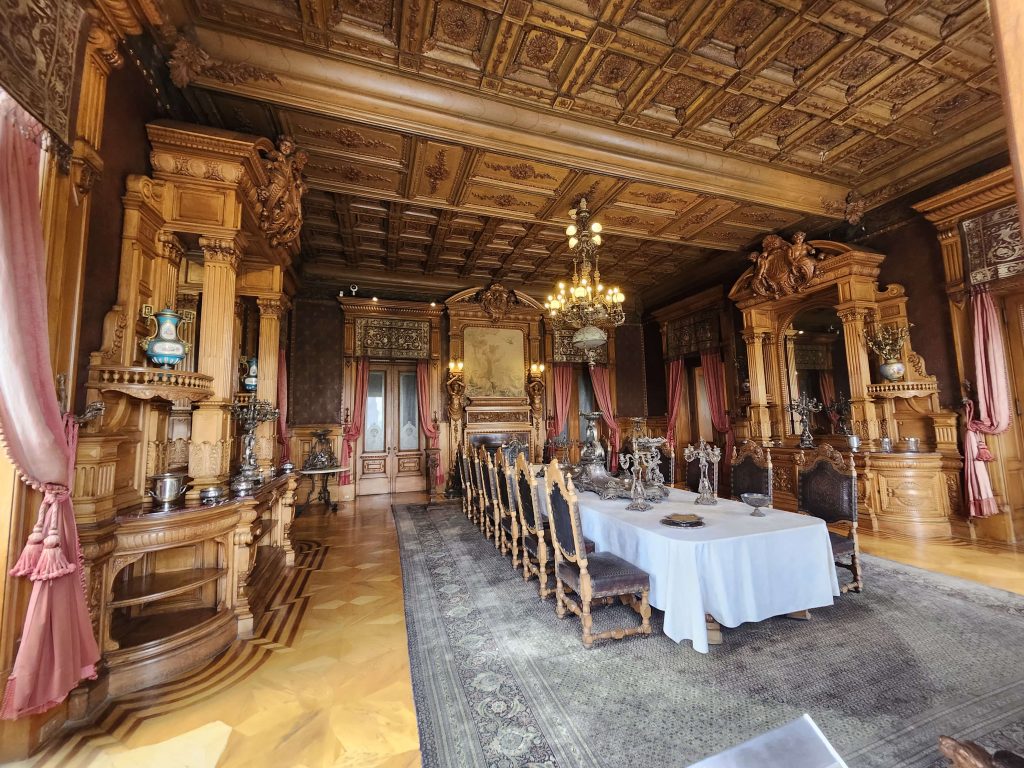
A depiction of the Aztecs use of the hill.
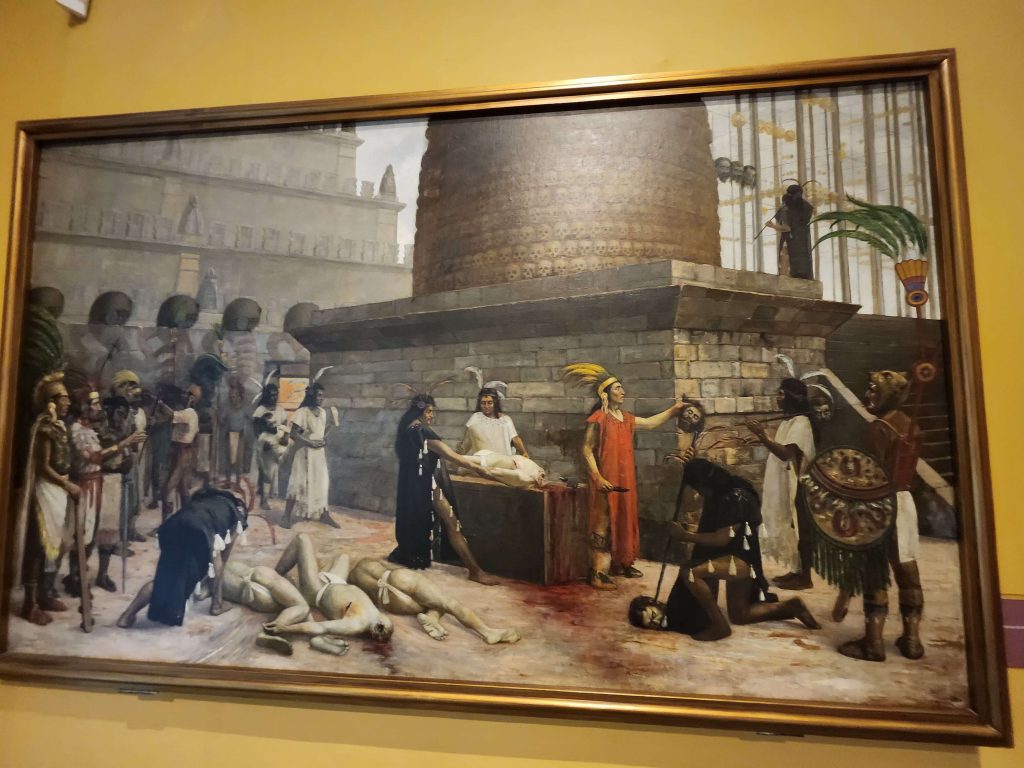
One of a series of rooms describing Mexico’s history.
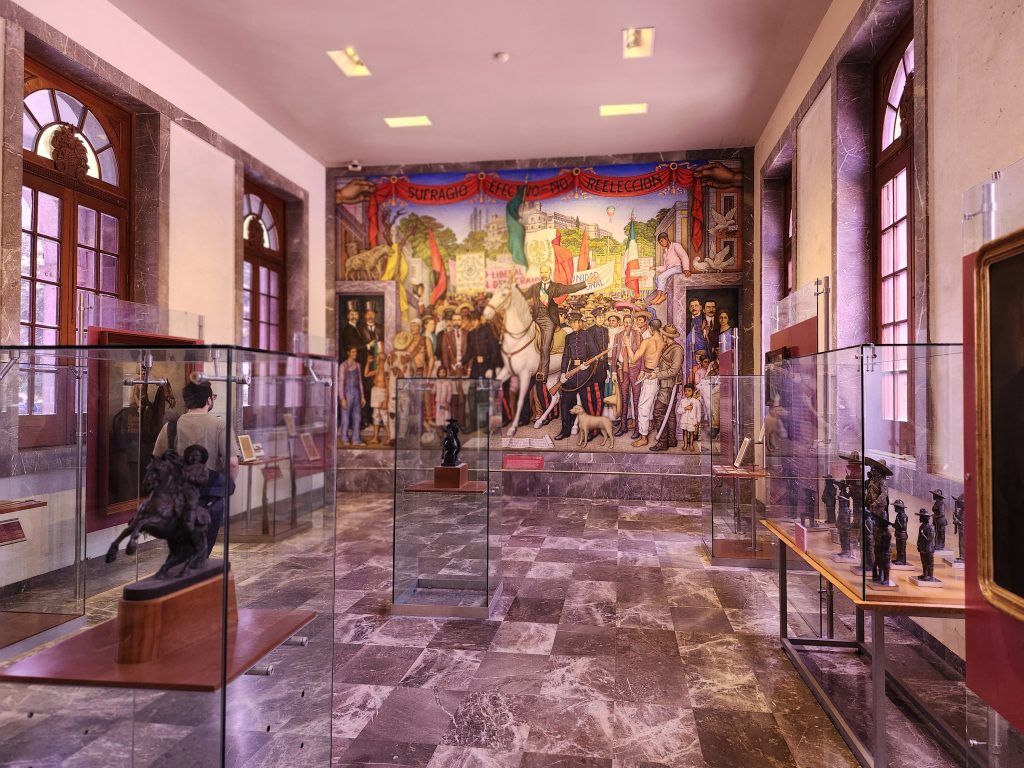
The outer grounds are incredibly beautiful.
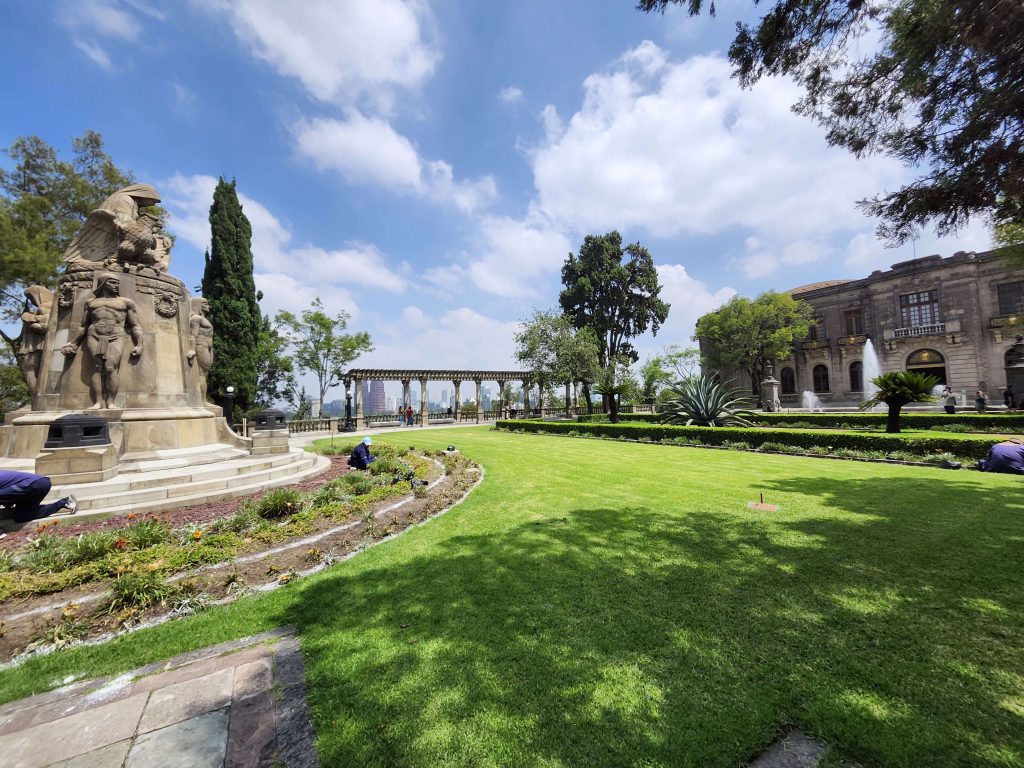
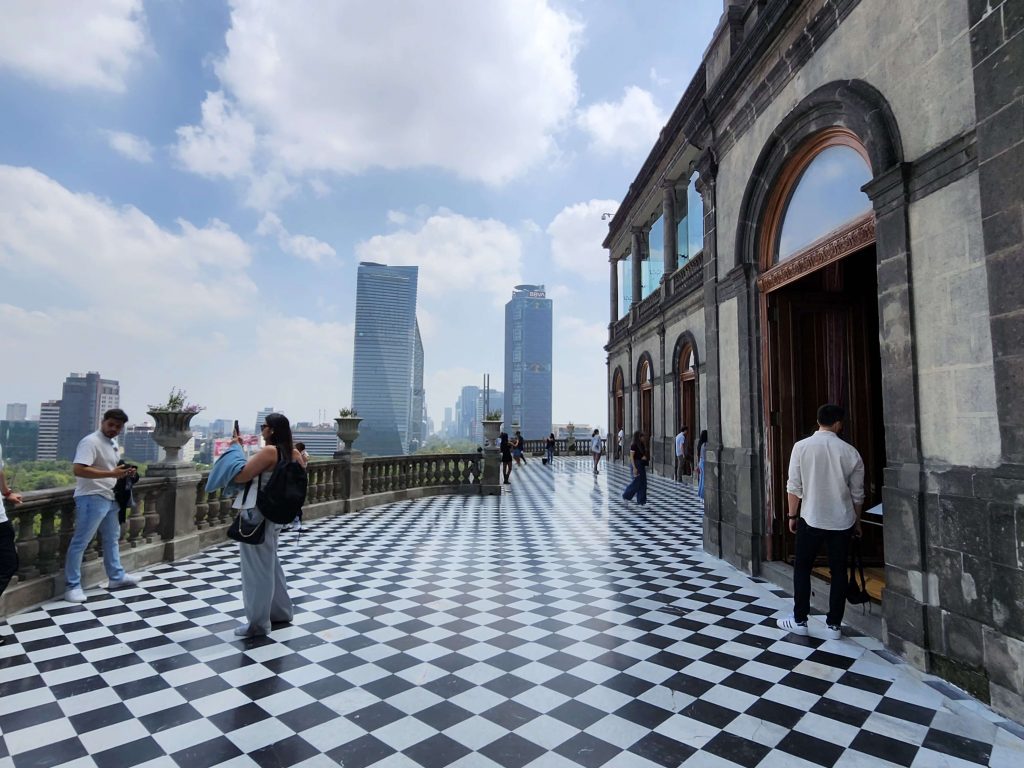
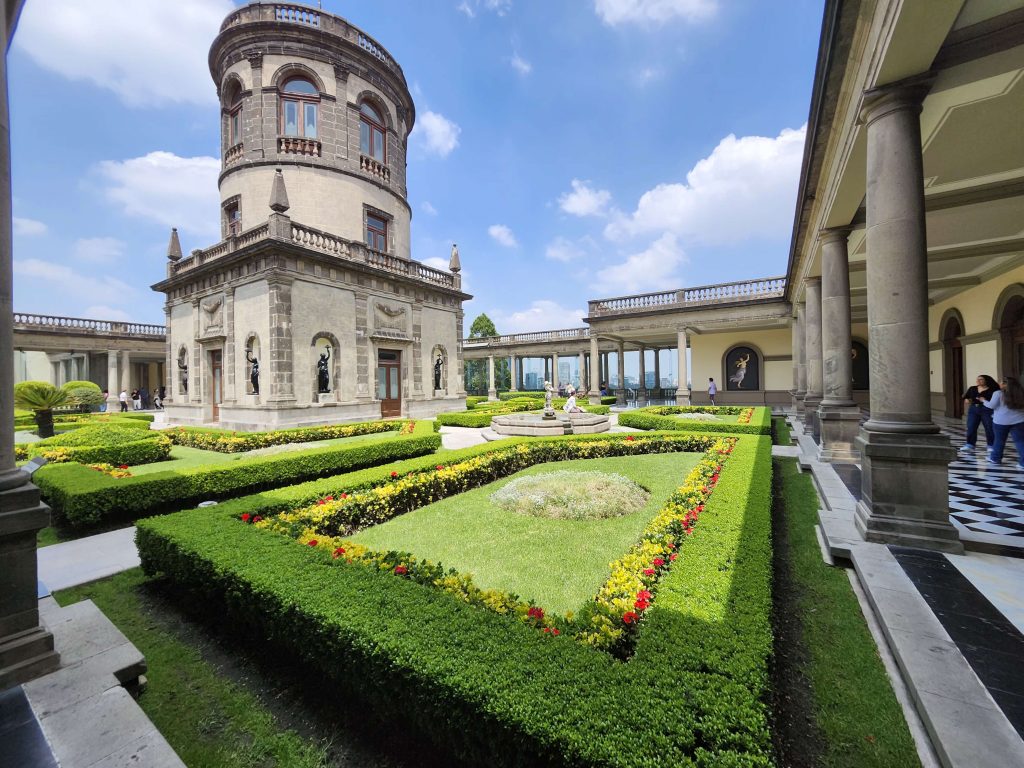
The hill provides a wonderful of just part of the larger park area.
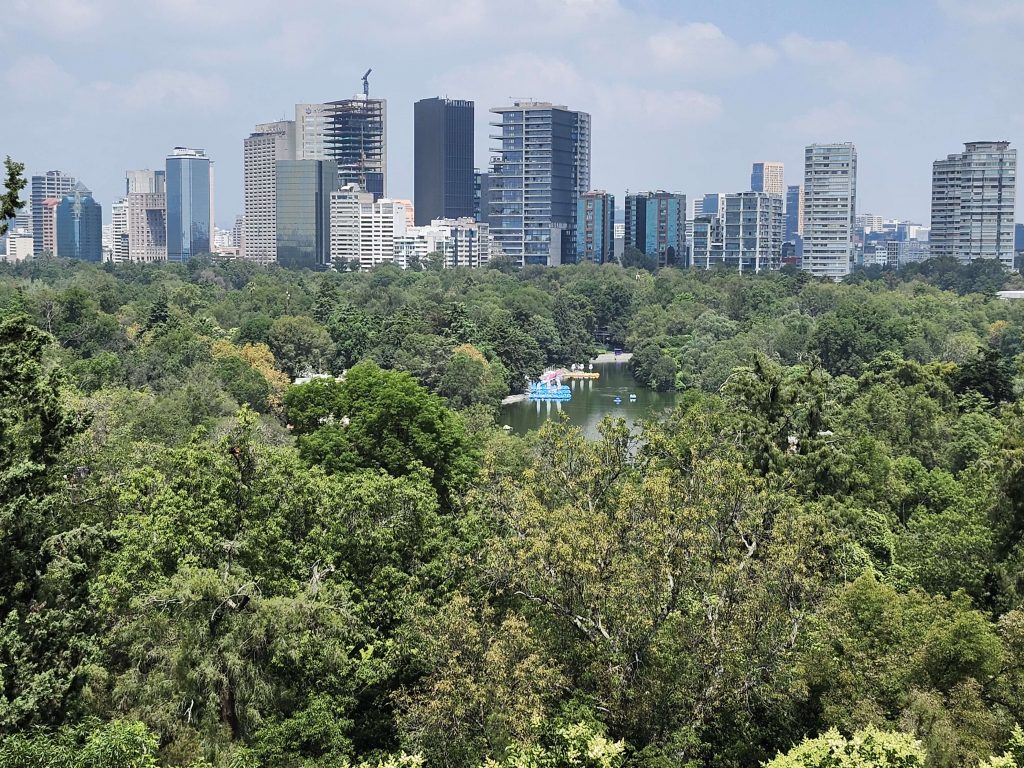
Universidad Nacional Autonoma de Mexico
I visited the campus of the Universidad Nacional Autonoma de Mexico (UNAM). It has over 300,000 students and staff and is the oldest university on the American continent as its charter was granted by Philip II of Spain in 1551. Most of the current campus was built between 1950 and 1955 and many of its buildings are now a bit dated. But the landscaping makes up for it as there are large tracks of green areas all over the campus.
The Estadio Olimpico was built in 1952 and seats over 100,000 people. It was used for the opening ceremonies of the 1968 Olympics and you can see the flame cauldron in the center of the picture. The artwork was done by Diego Rivera designed to represent the development of human potential through sport.
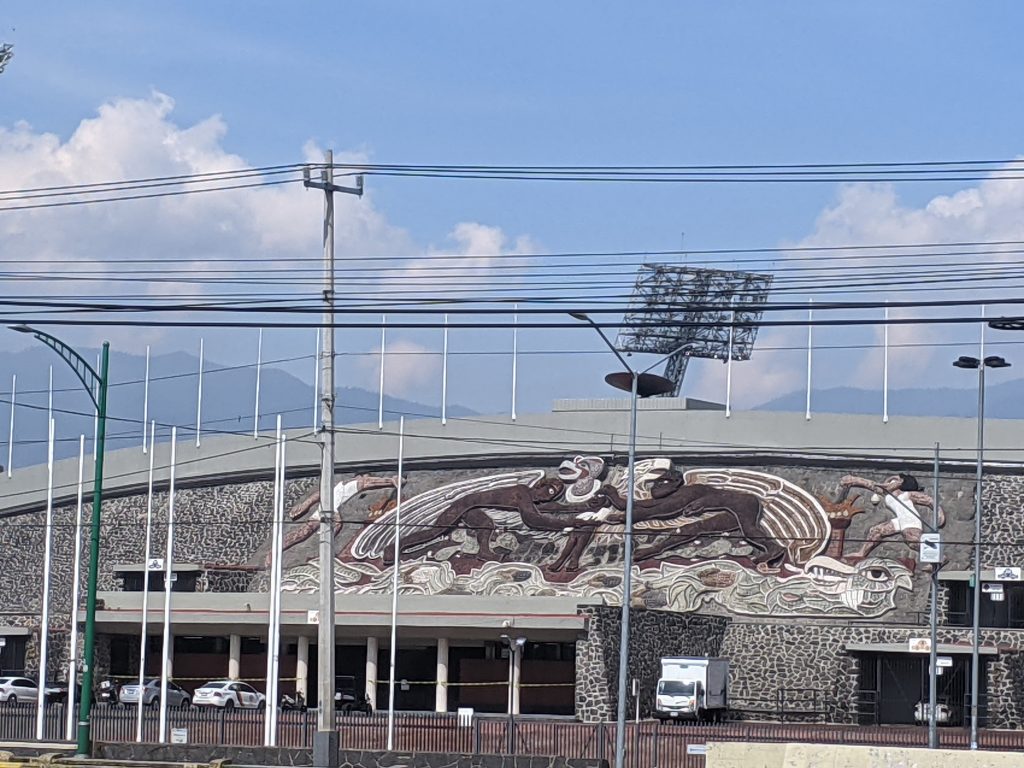
The famous 12 story library building covered by a mosaic designed by Juan O’Gorman with mostly natural stone. It represents Mexico’s progression through history.
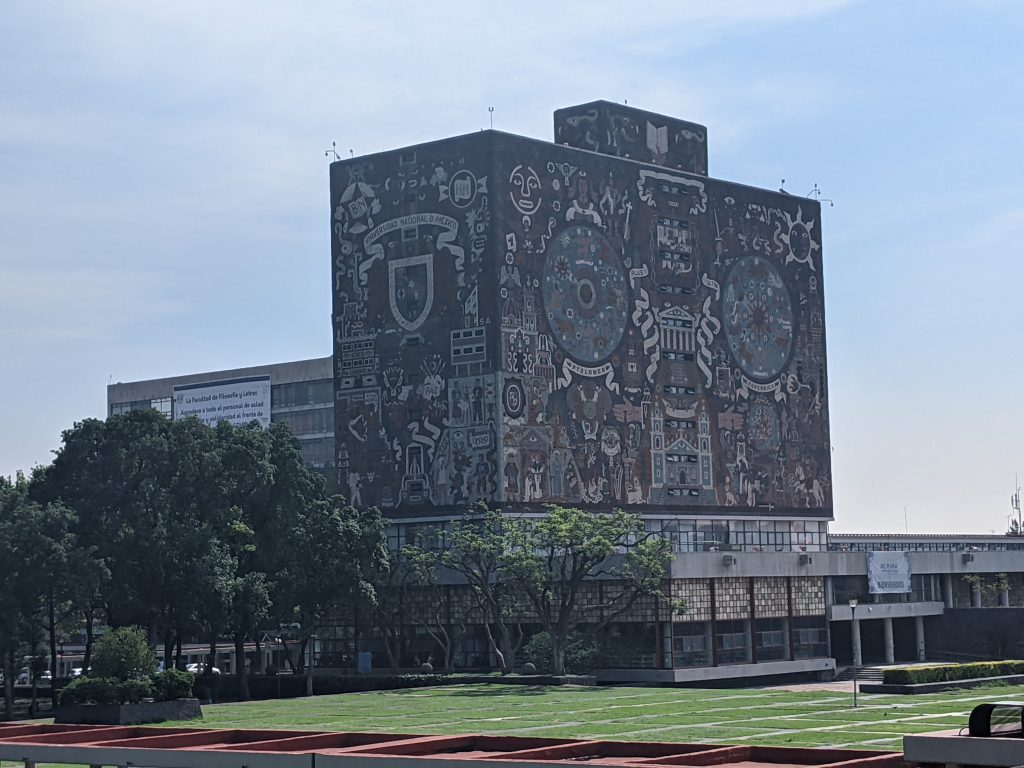
Another view of the library through a small park nearby.
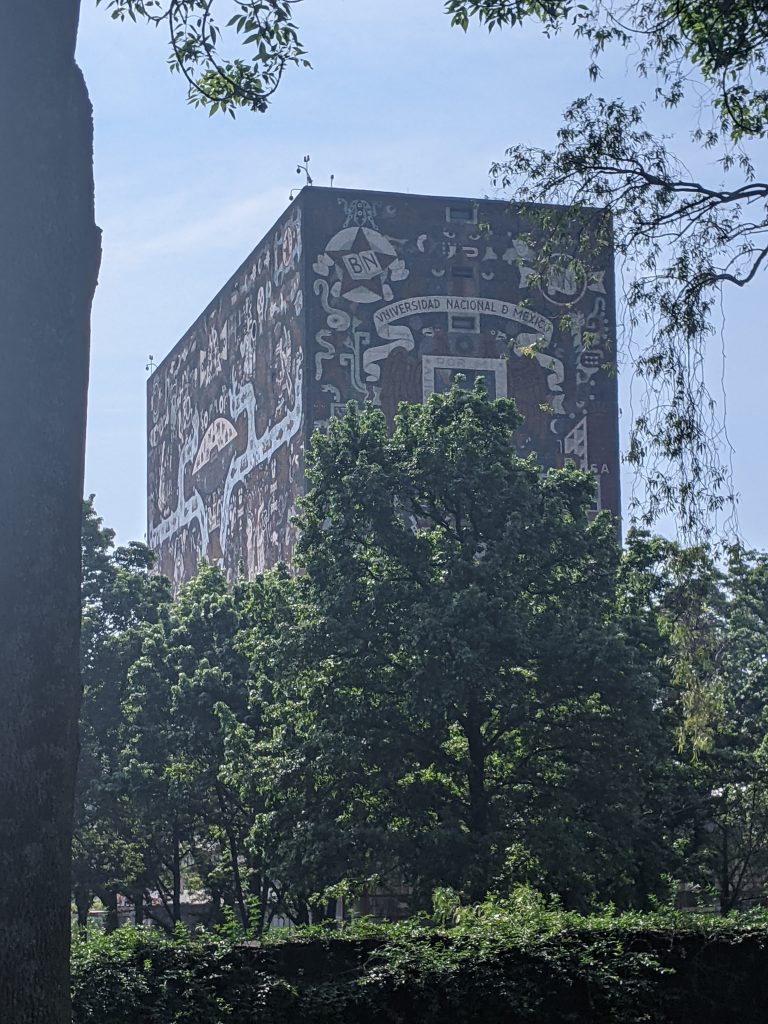
Airbnb Apartments
My Airbnb was a large comfortable apartment right in the heart of Roma Norte. The location and the price was so good, I stayed there a second time when I came back to Mexico City in July.
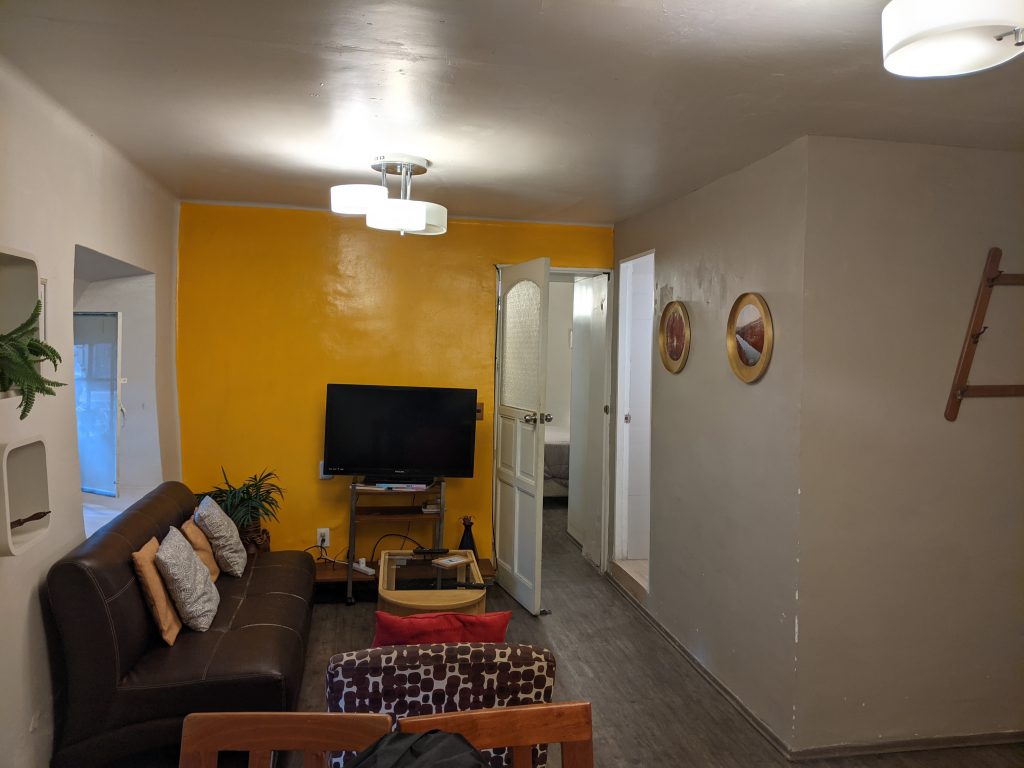
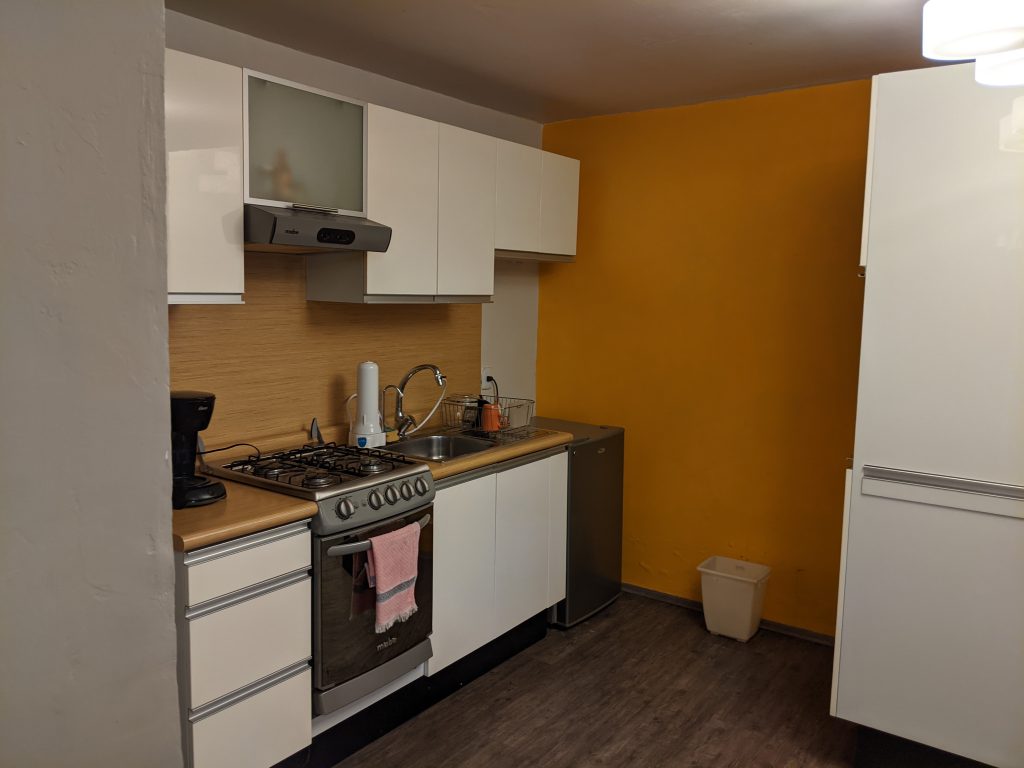
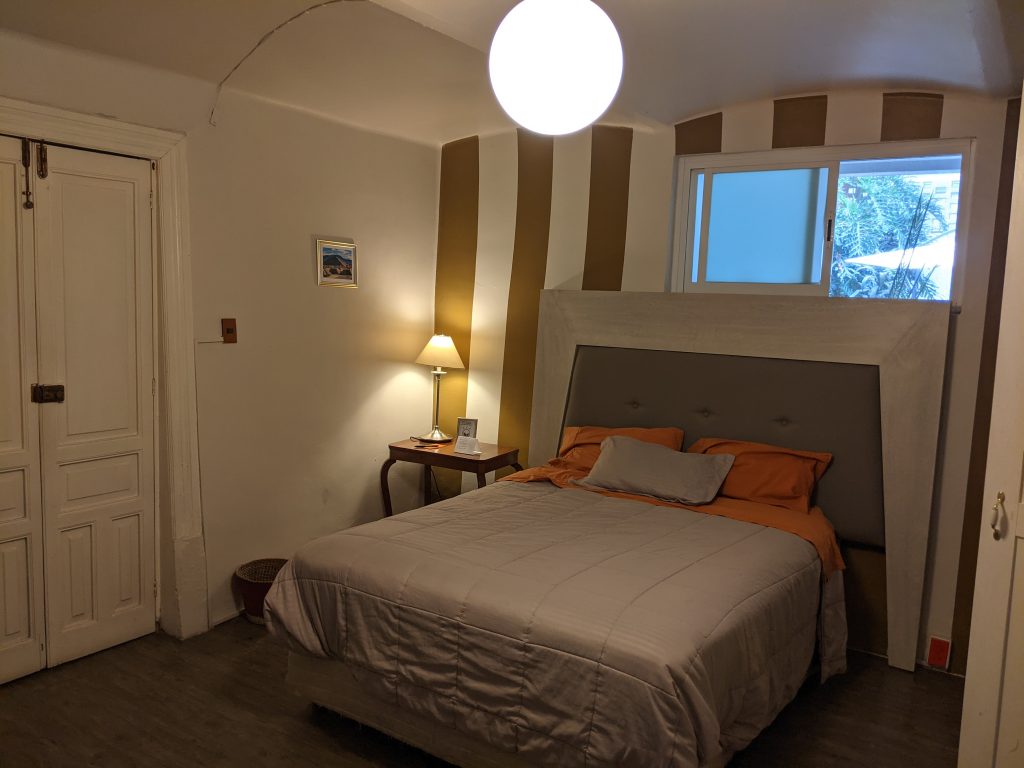
The view from the outside.
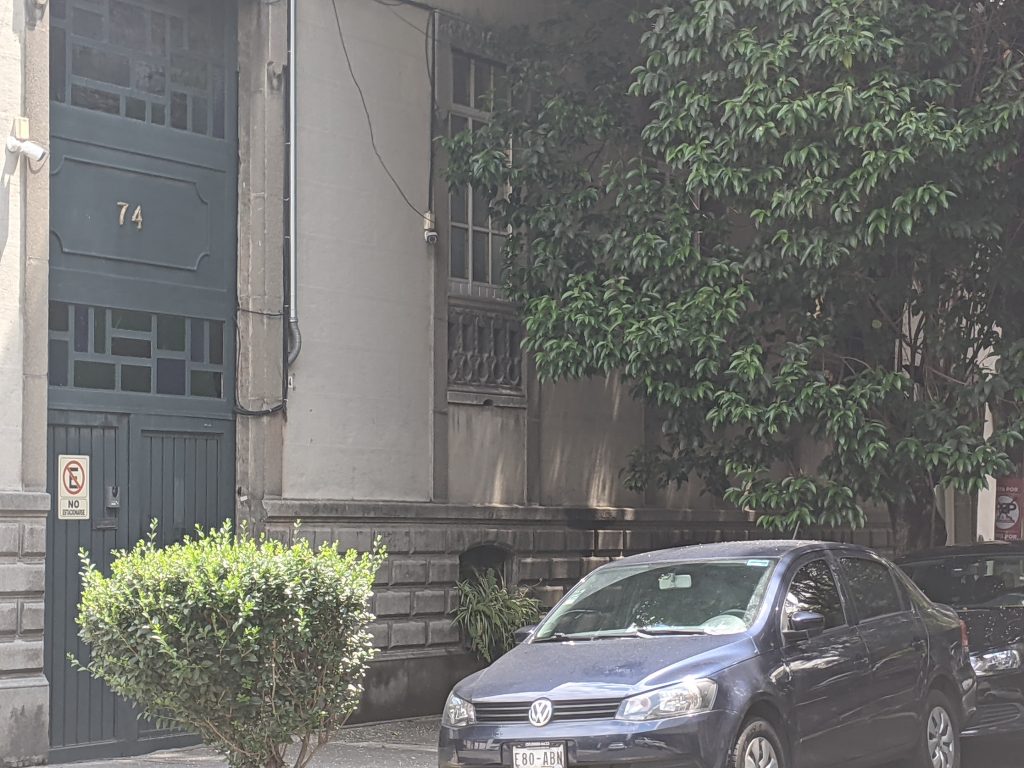
I made a third trip to Mexico City in October for a long weekend and stayed in a wonderful apartment in the Reforma area of town.
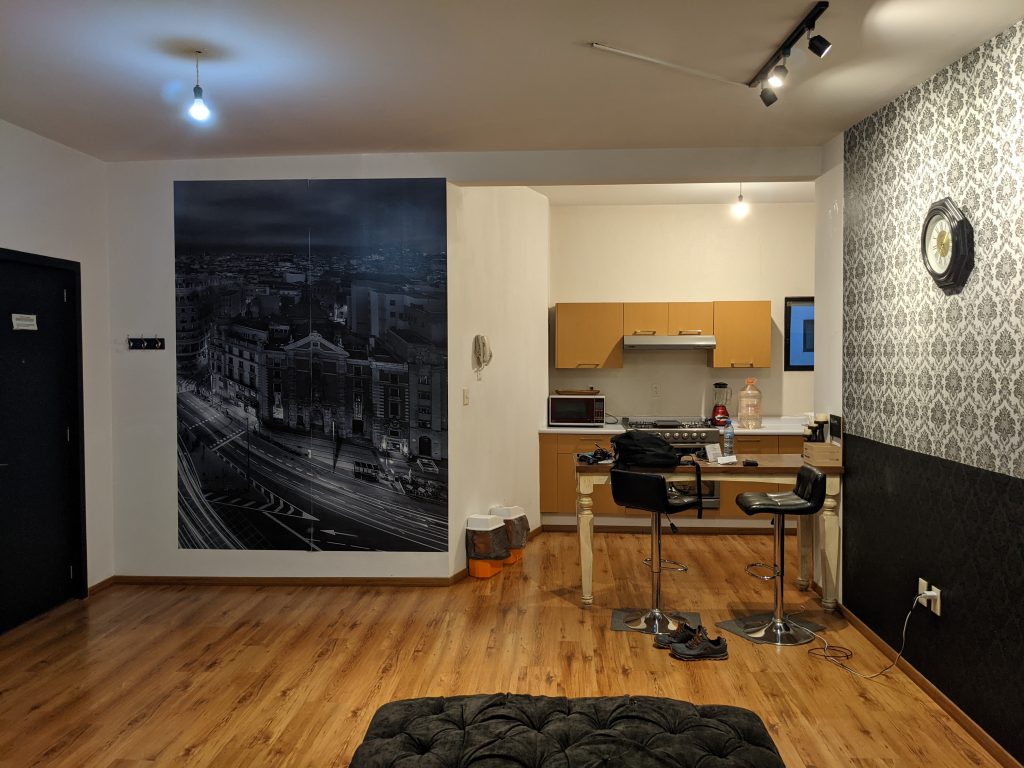
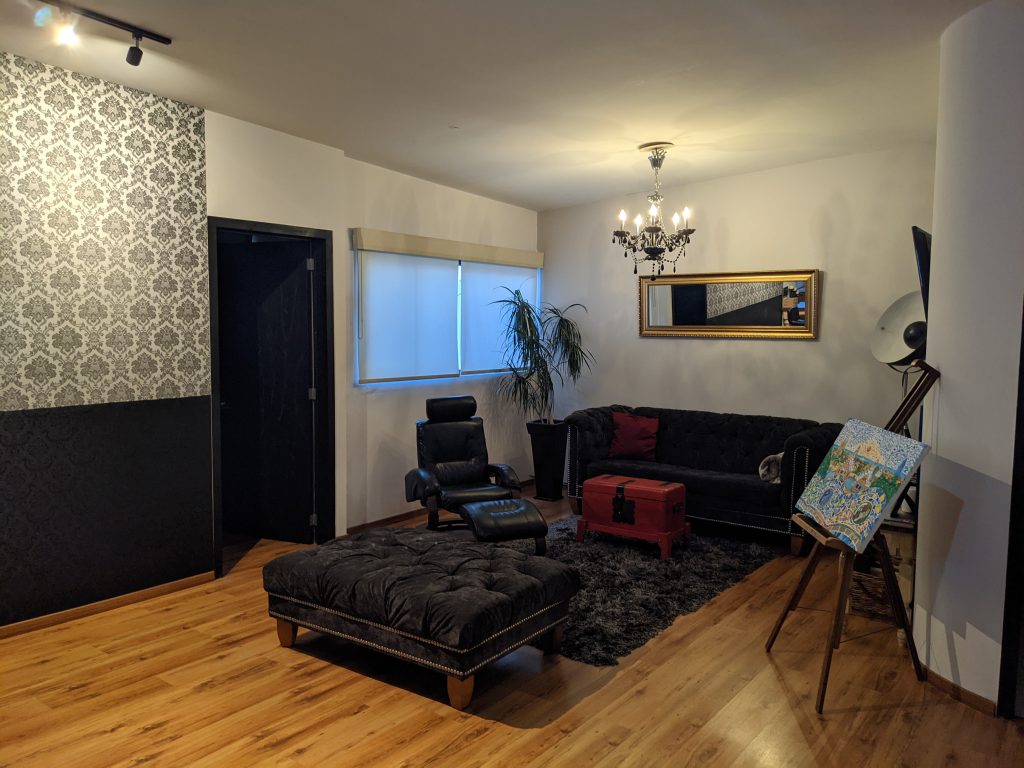
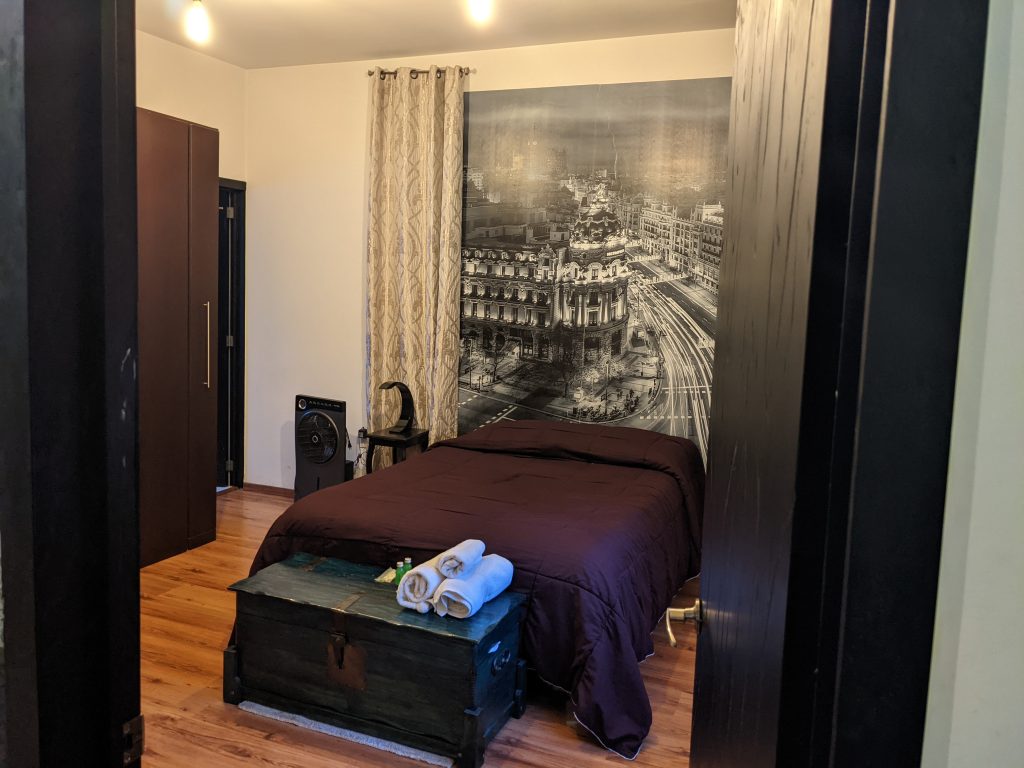
The street view of the apartment building. Unfortunately my apartment wasn’t one of the ones with a small balcony.
